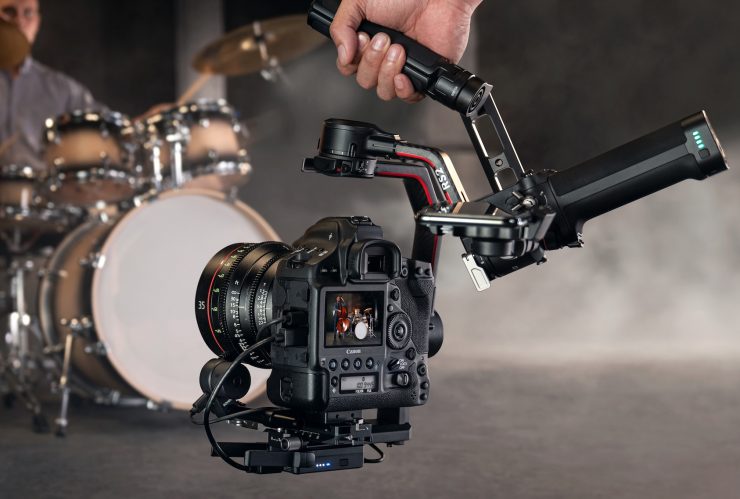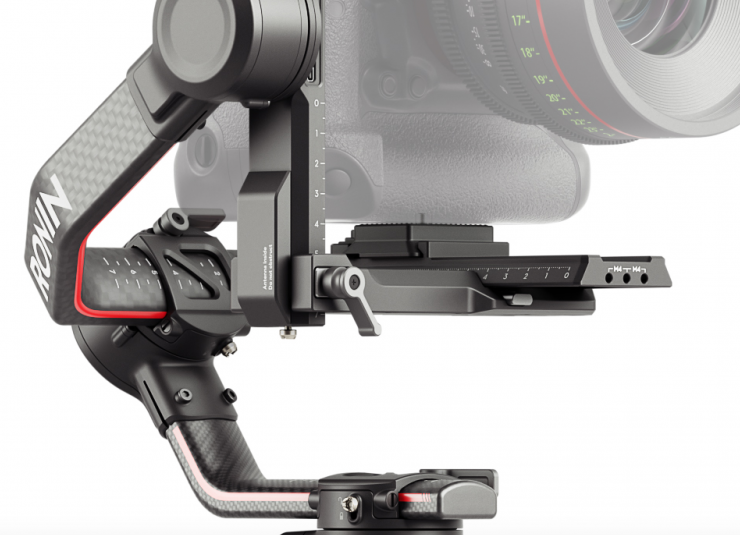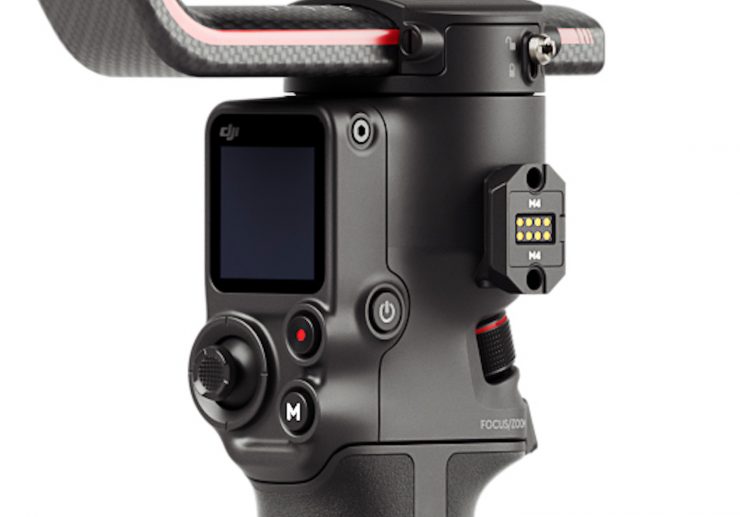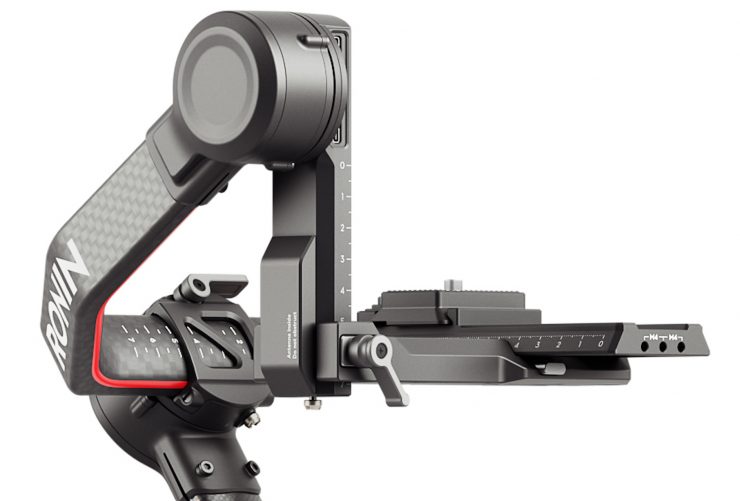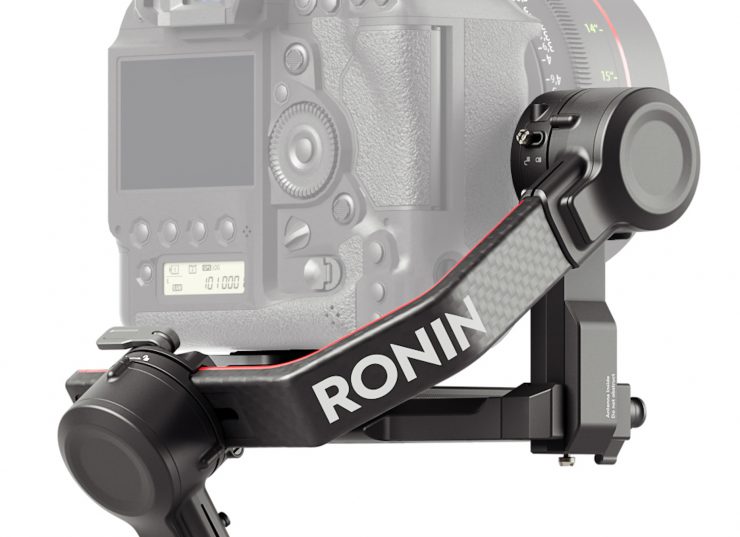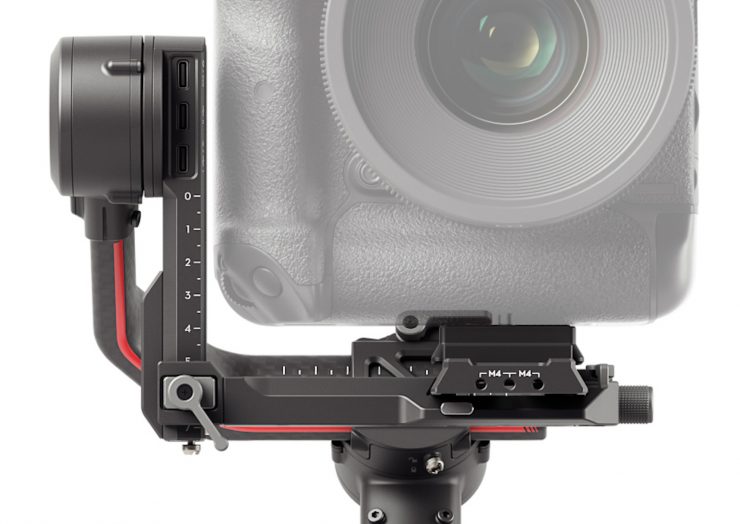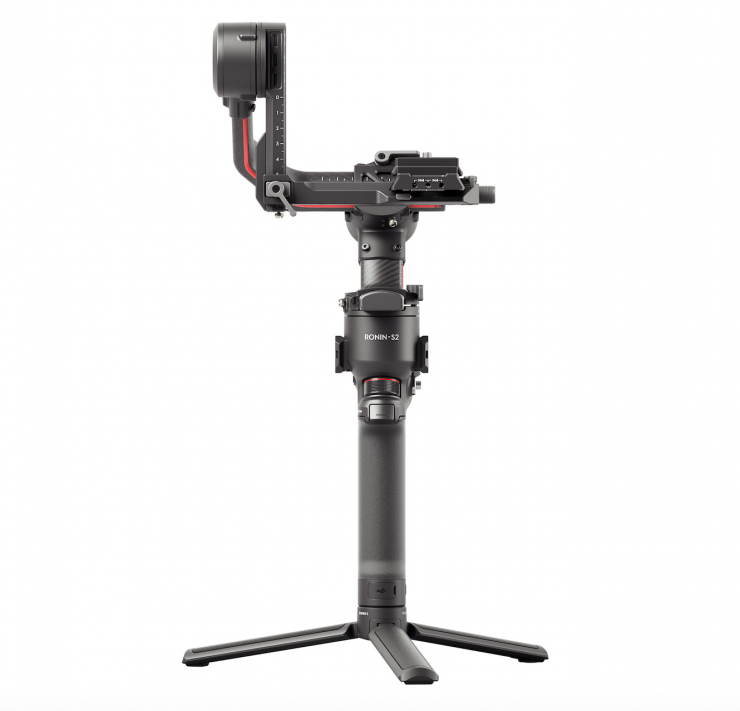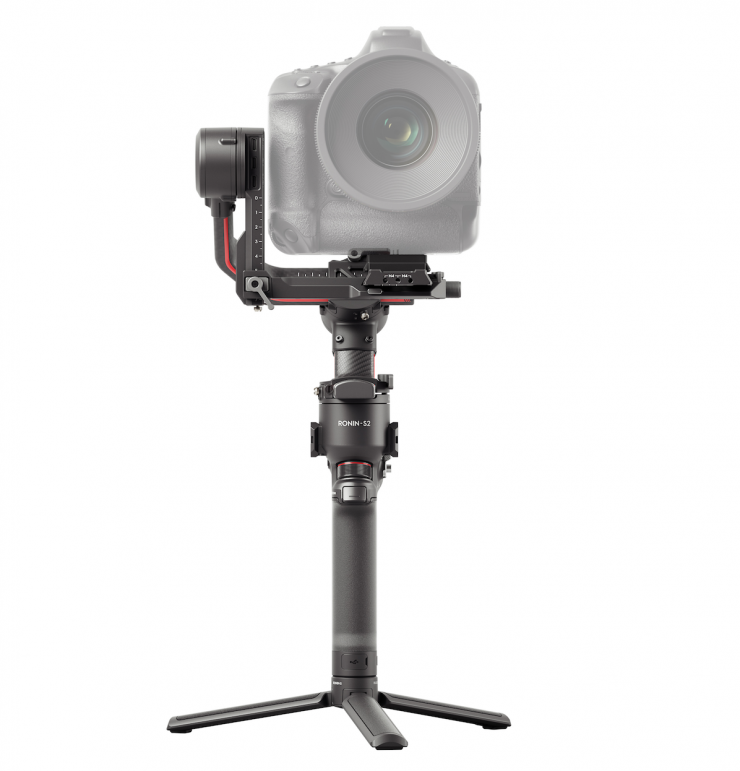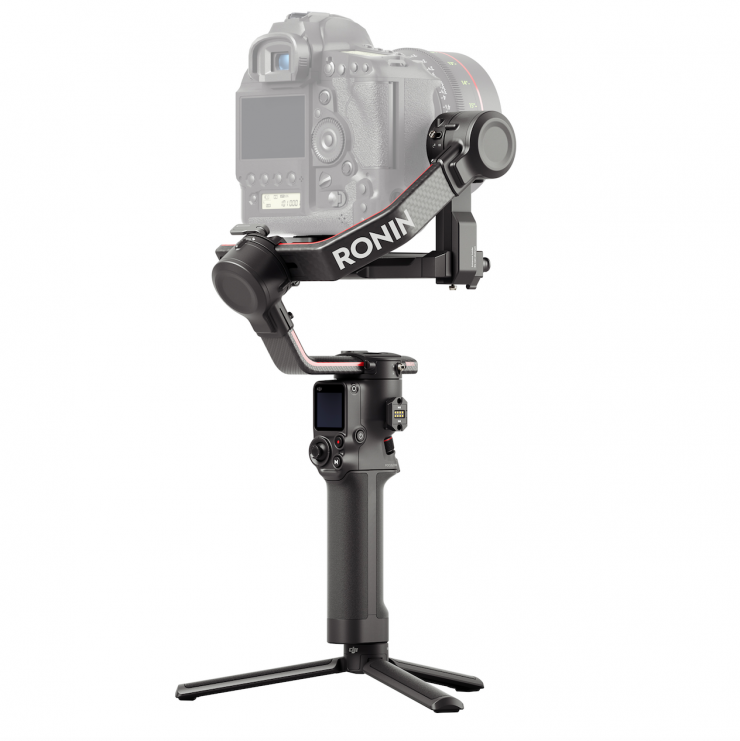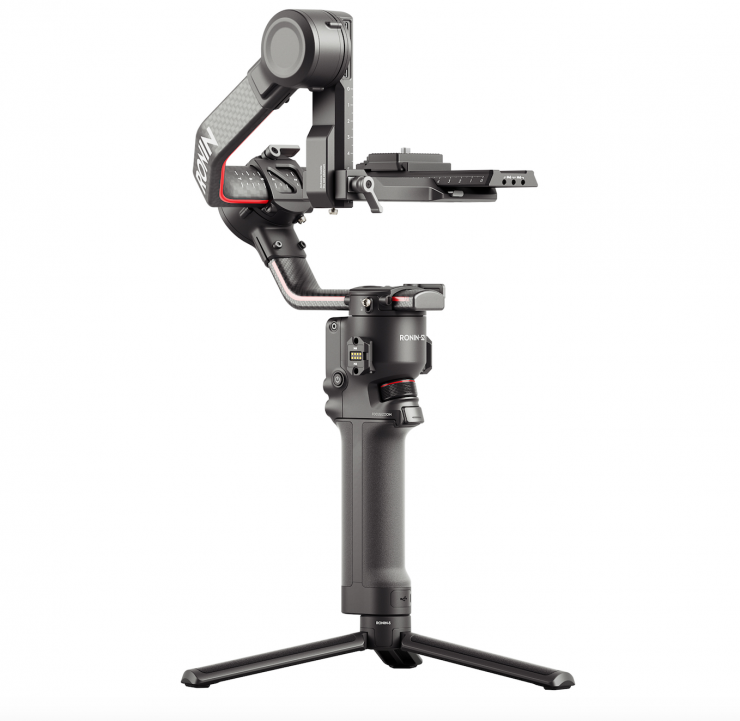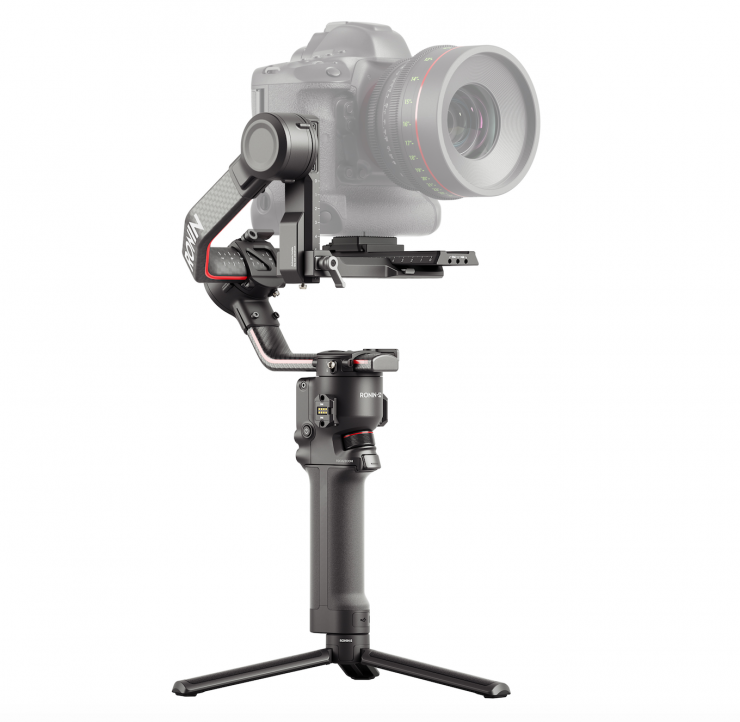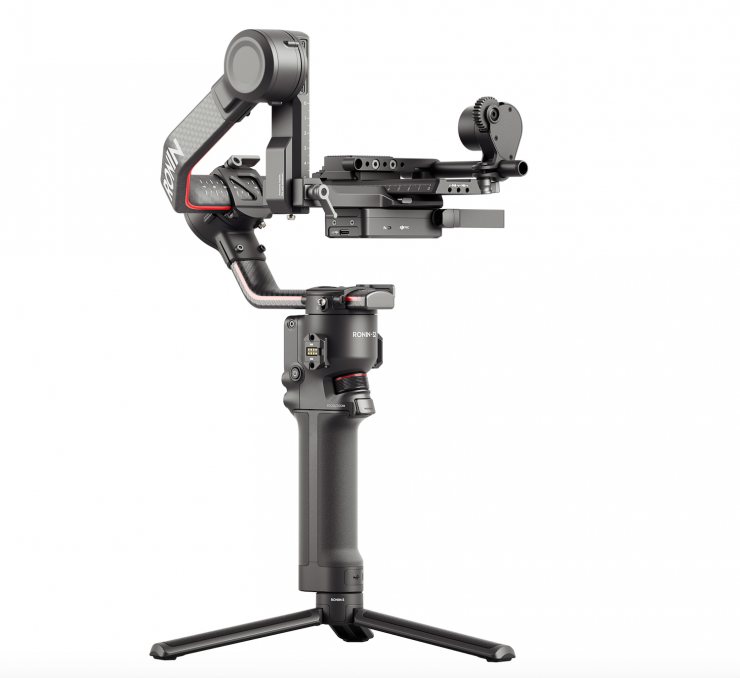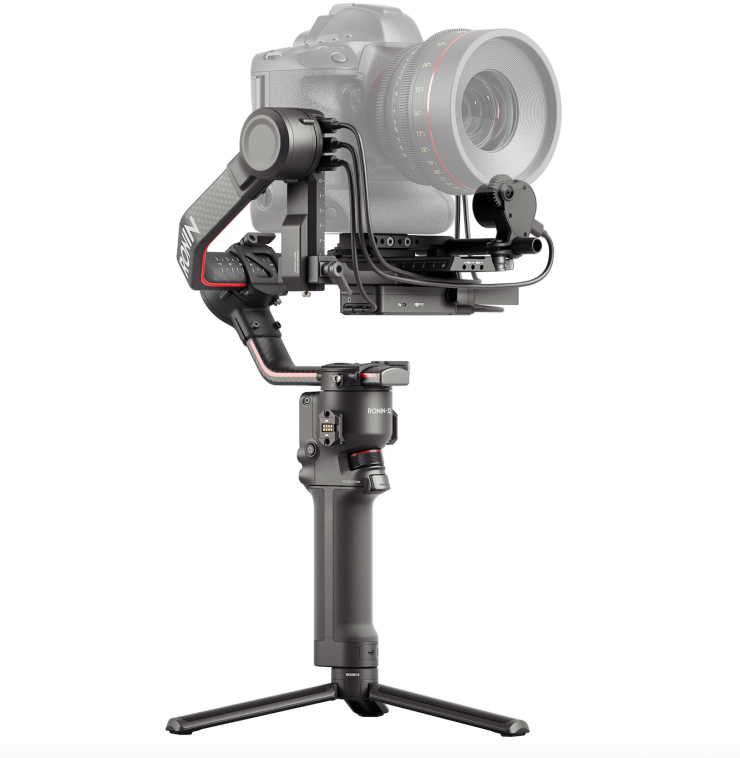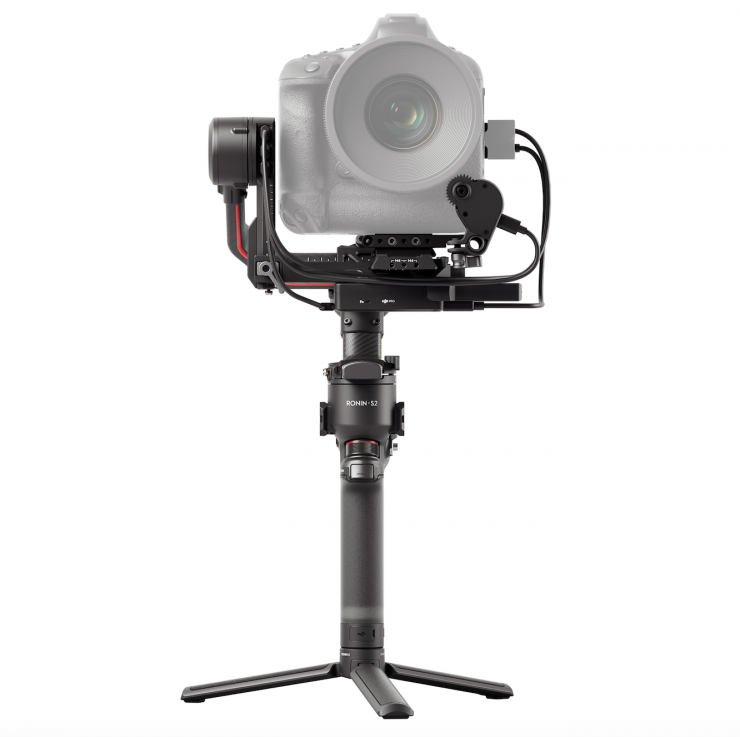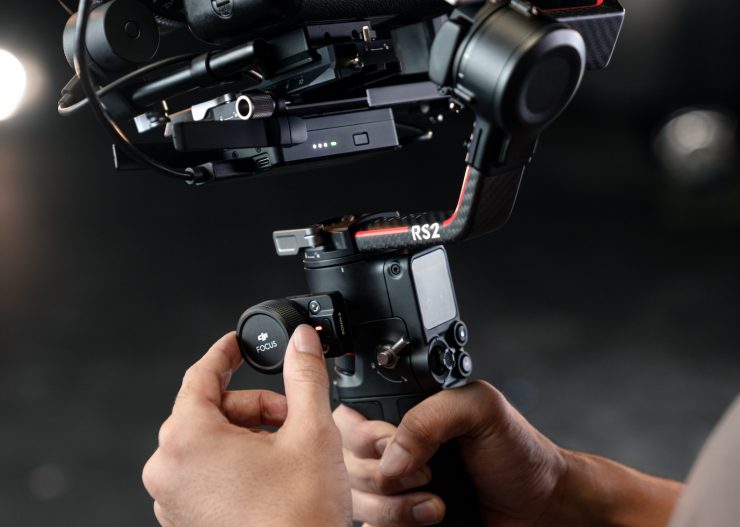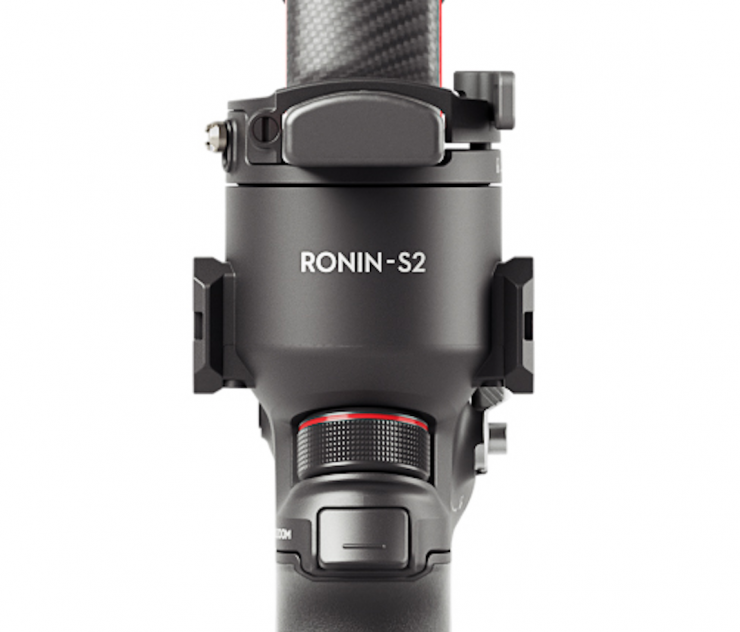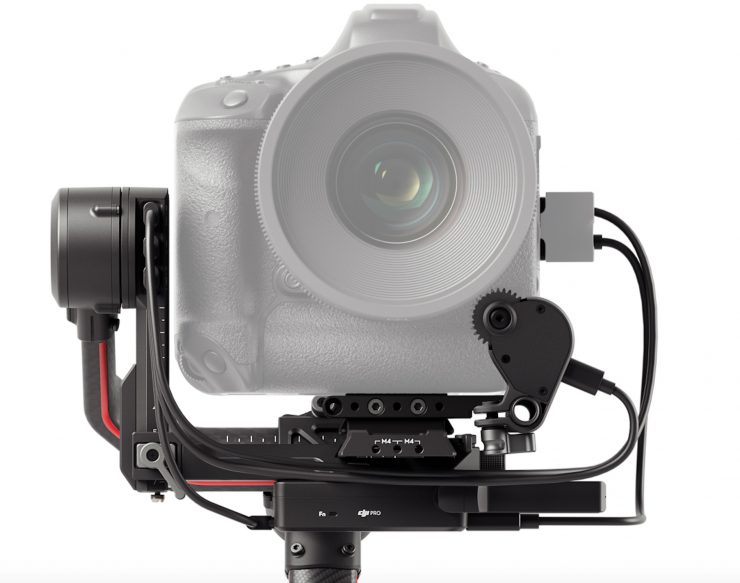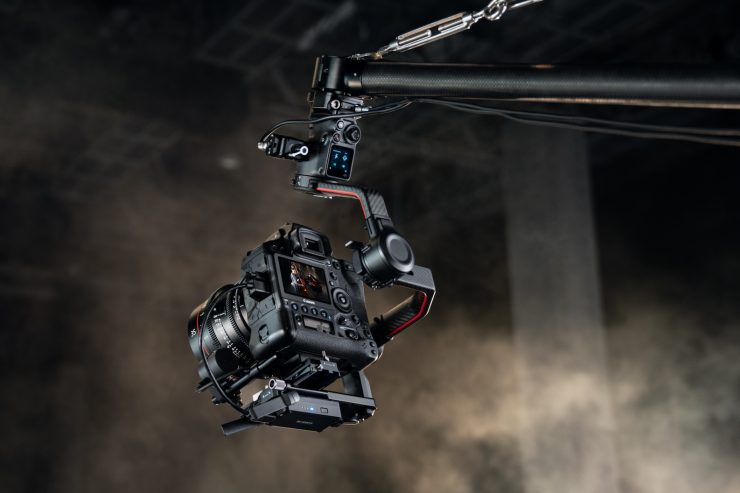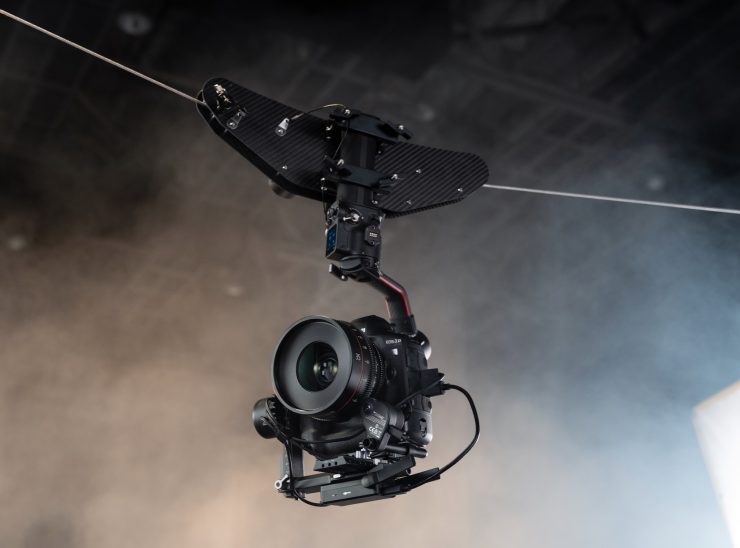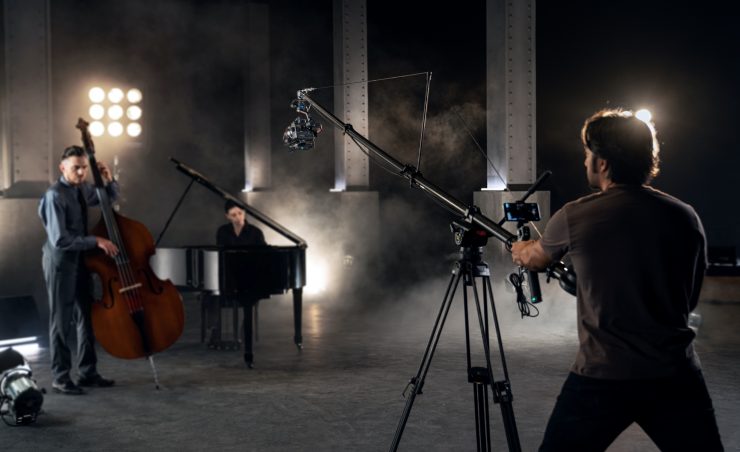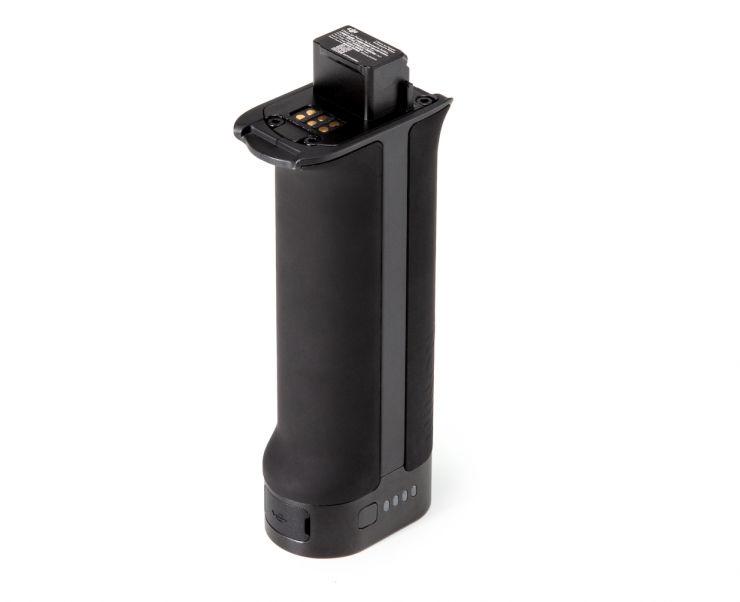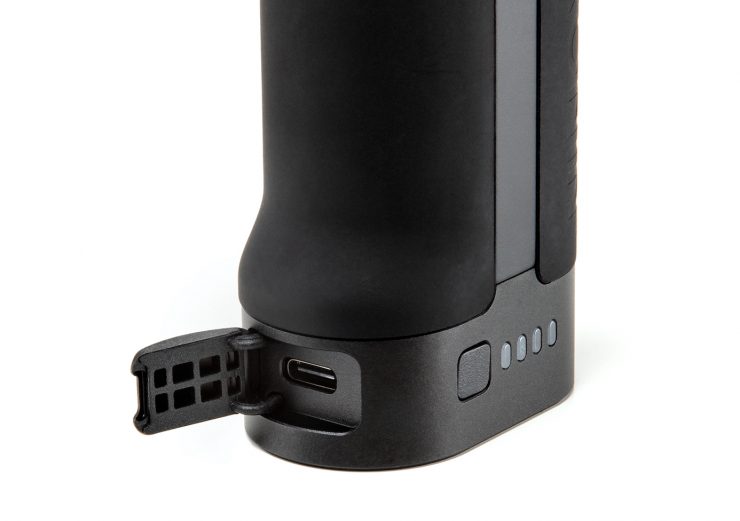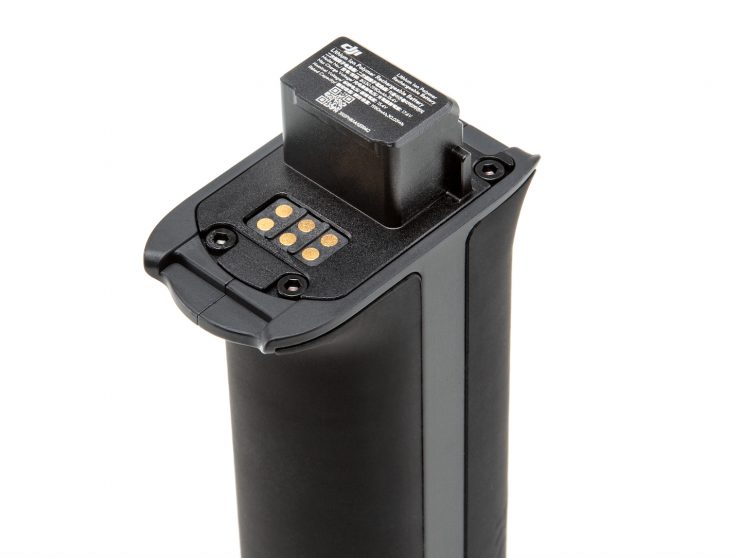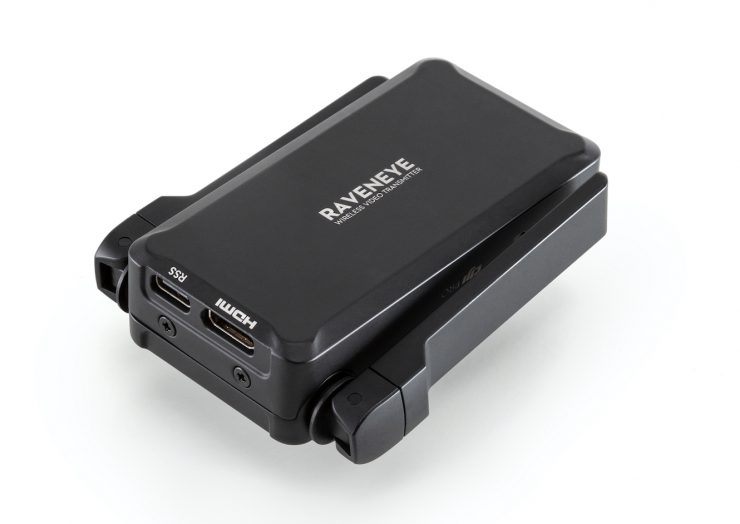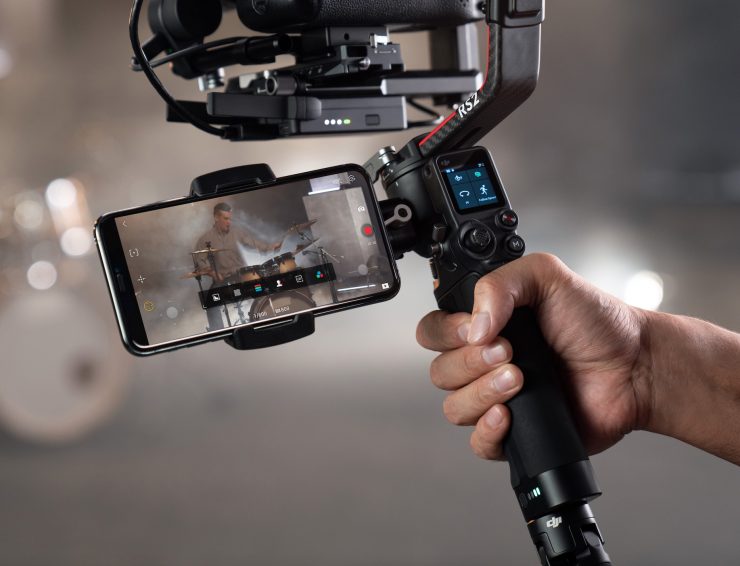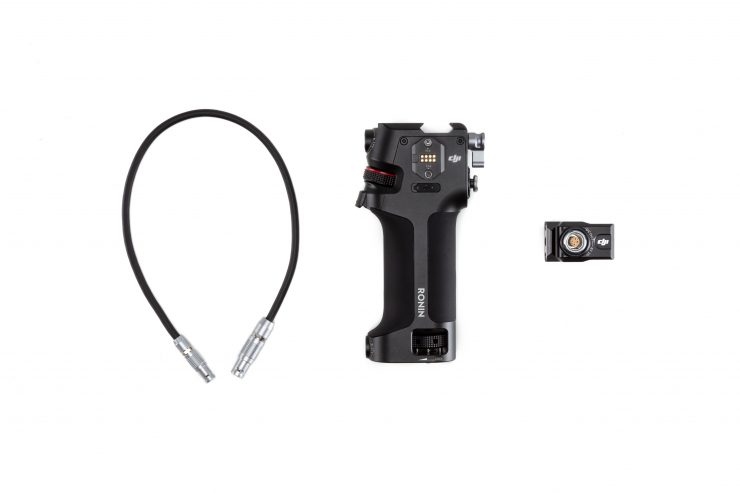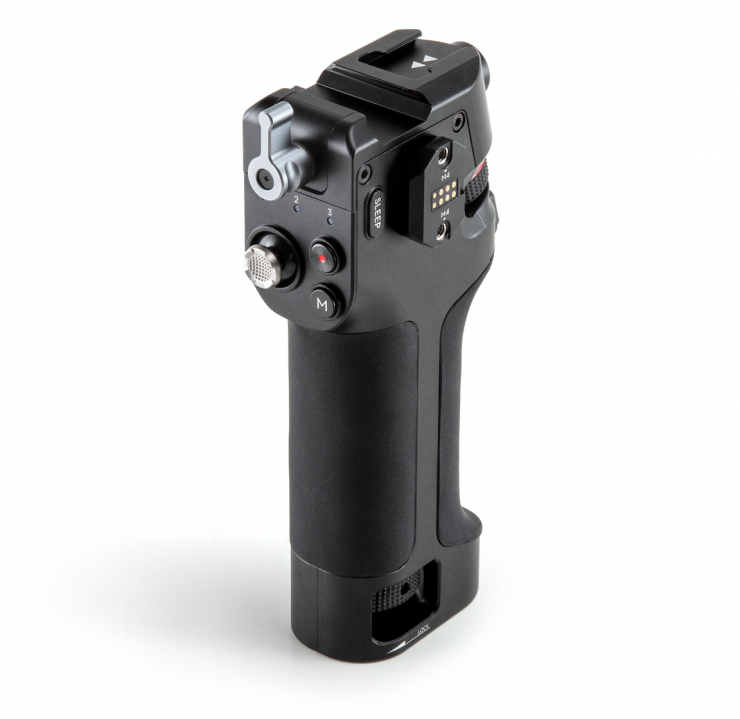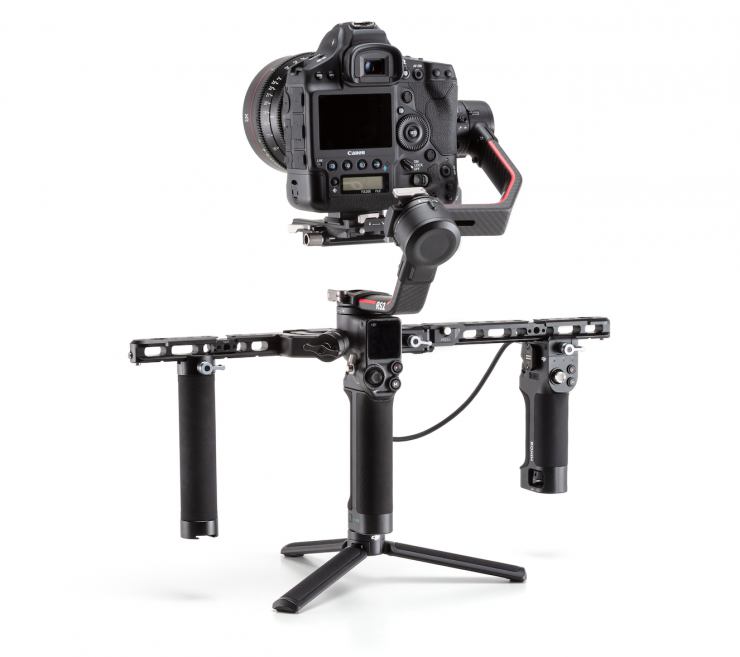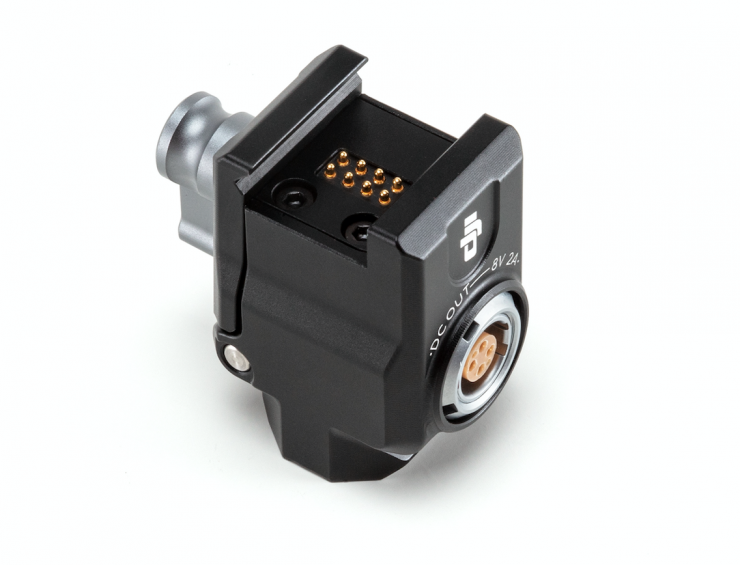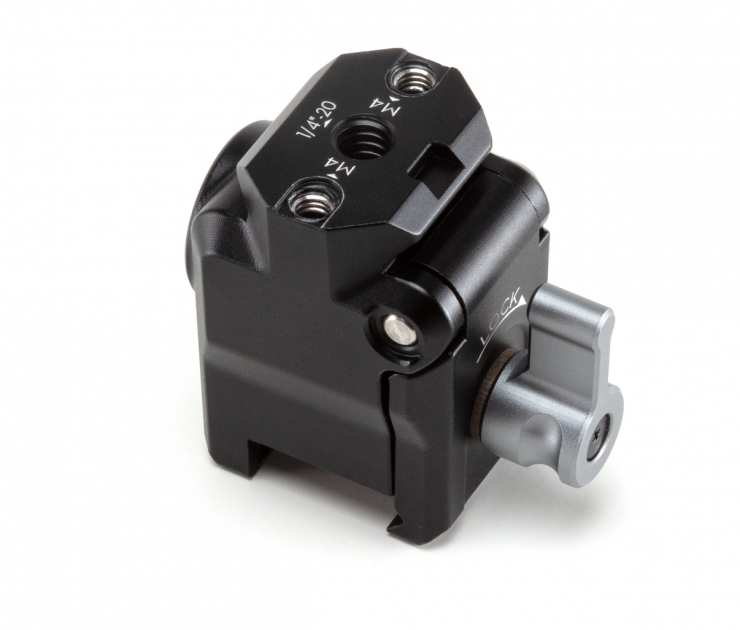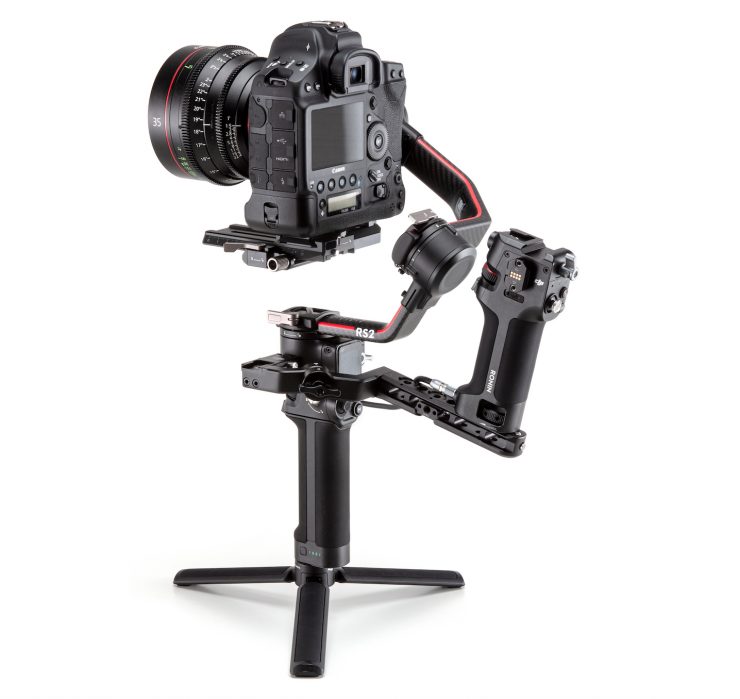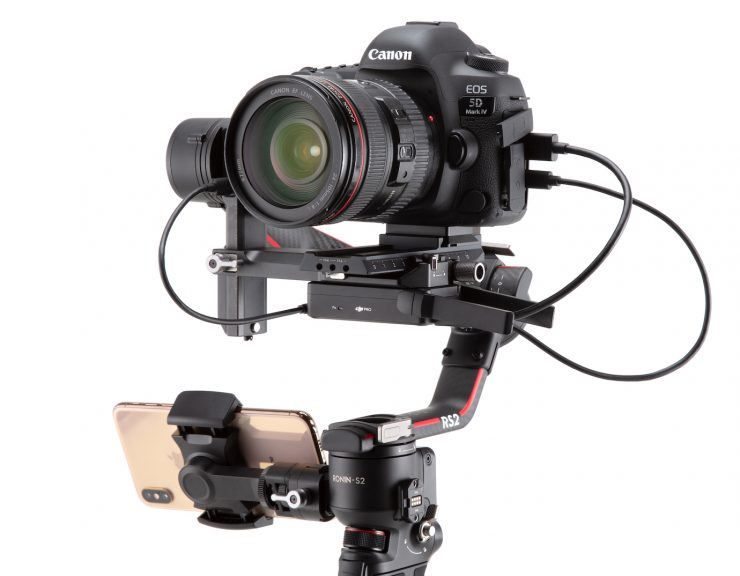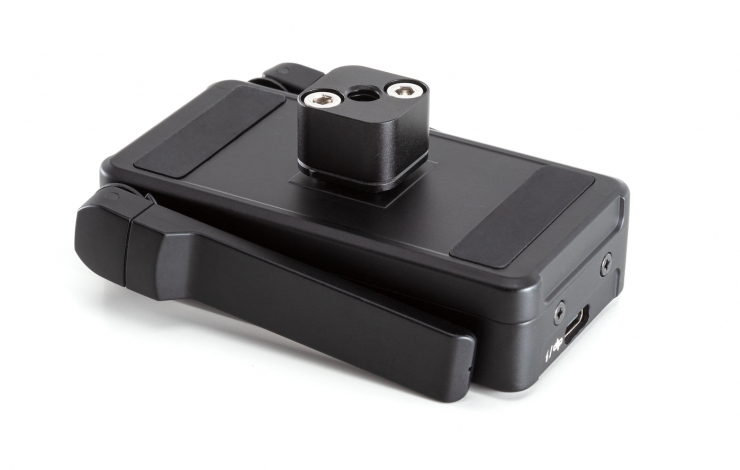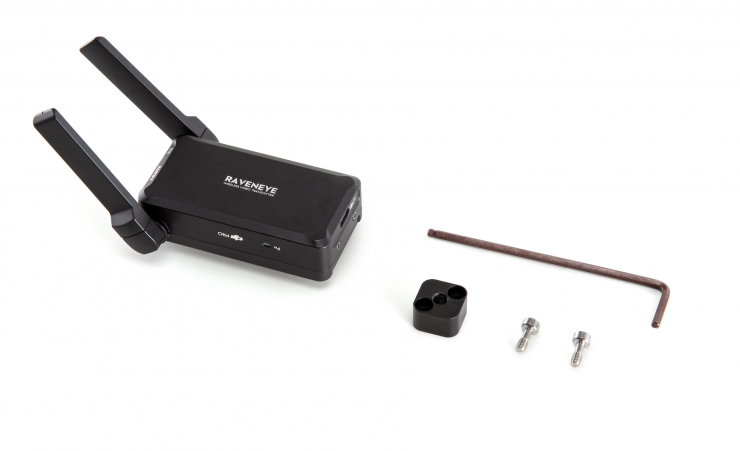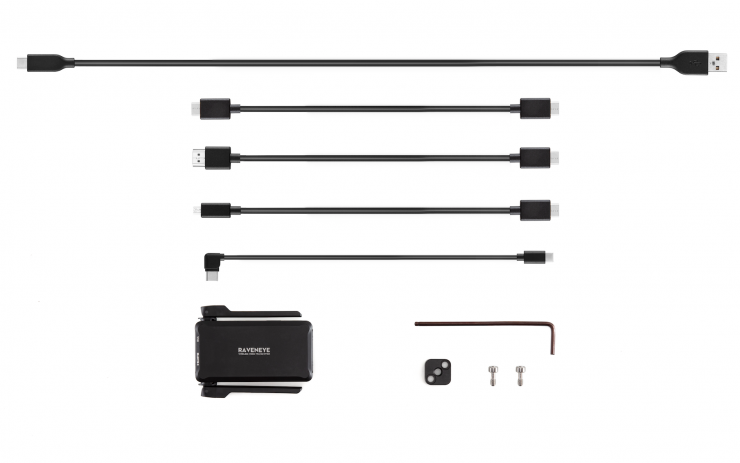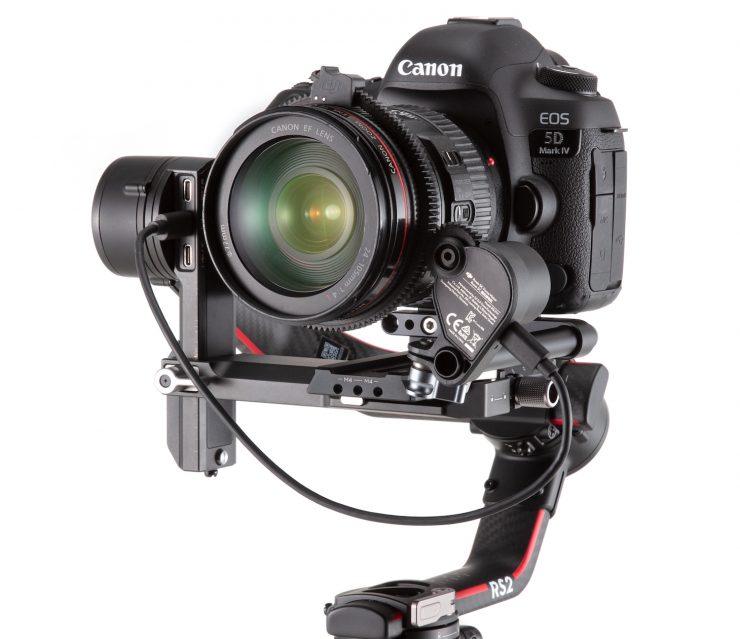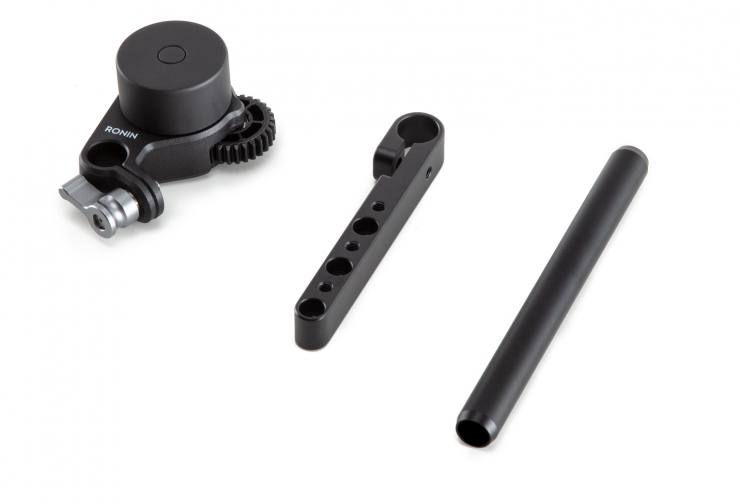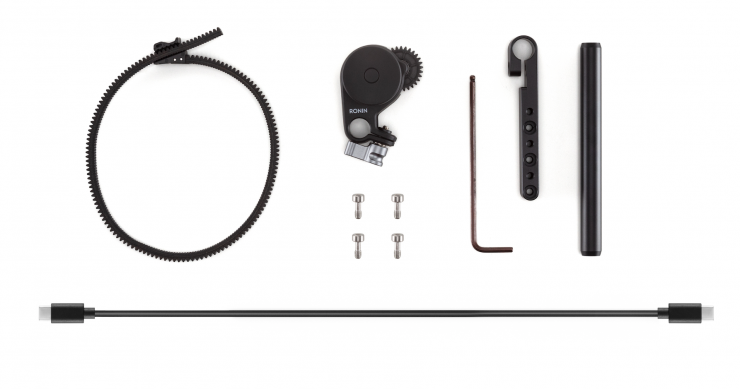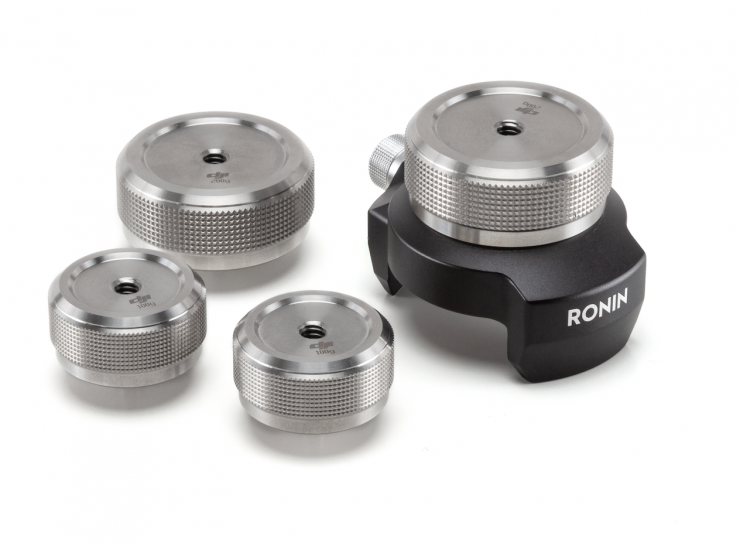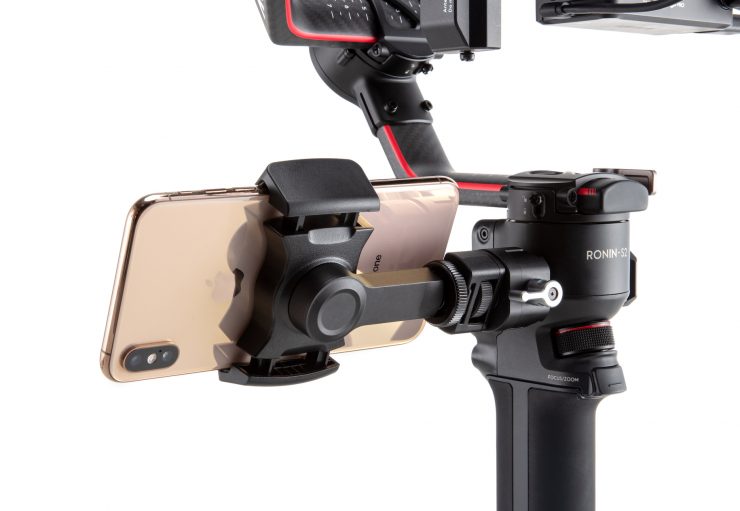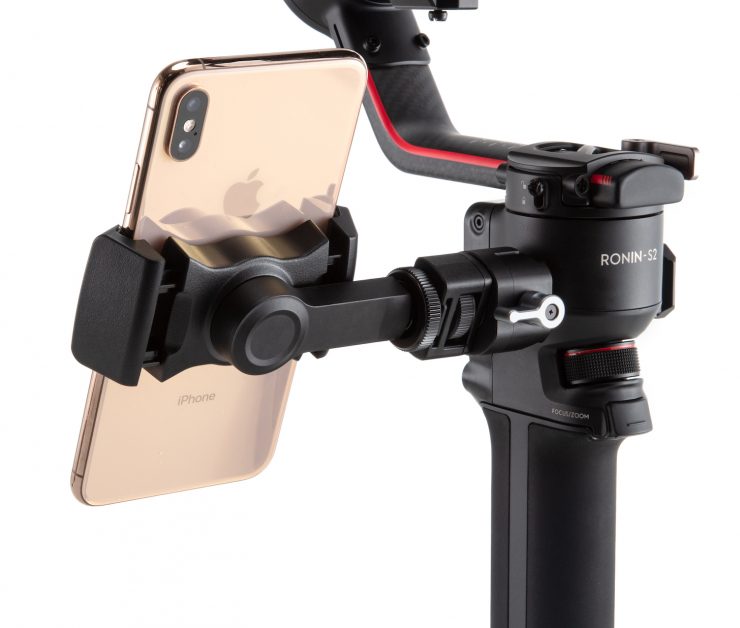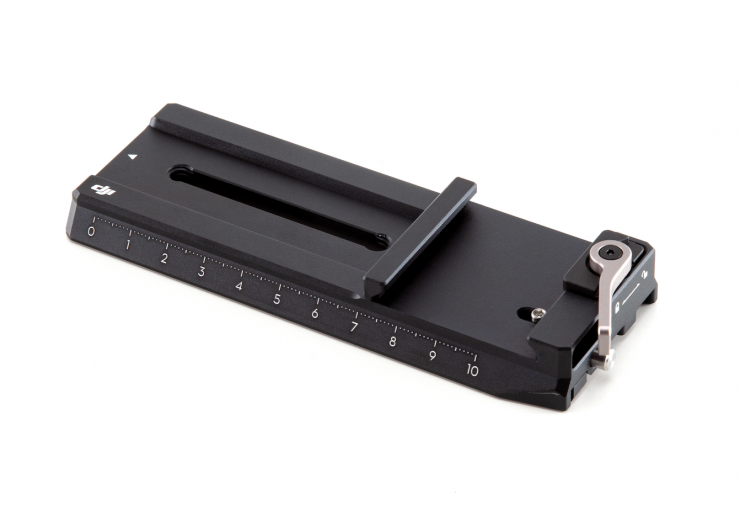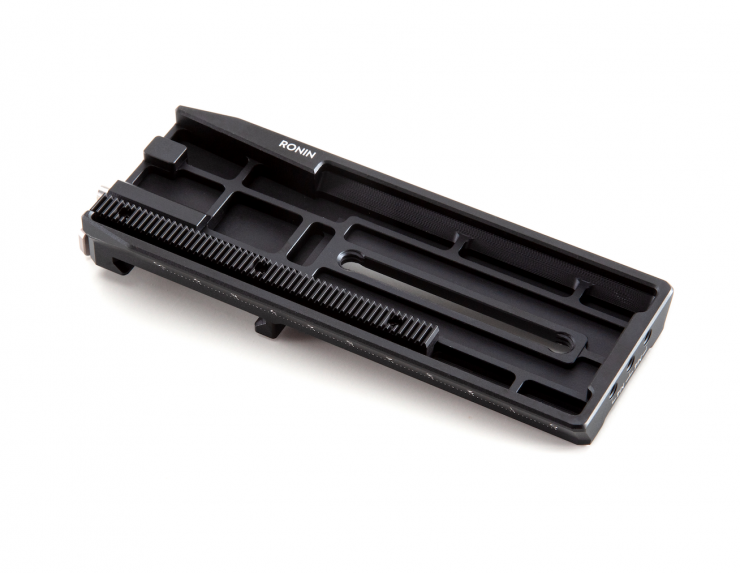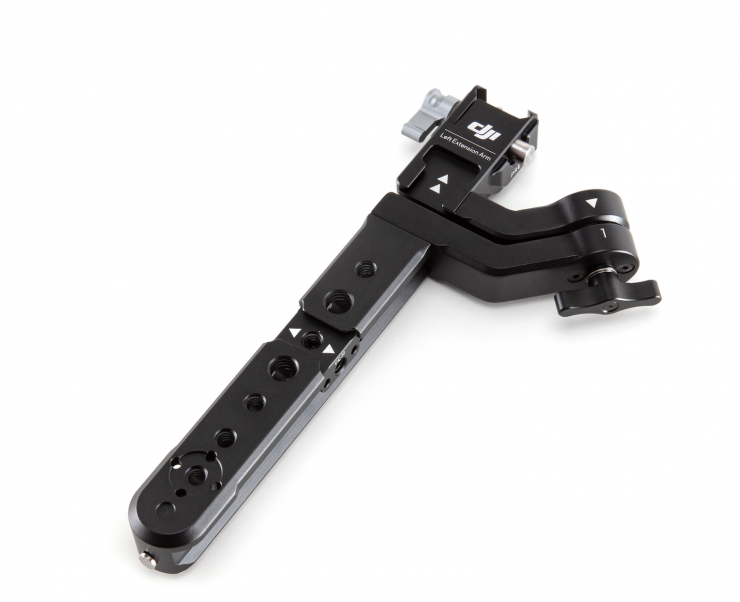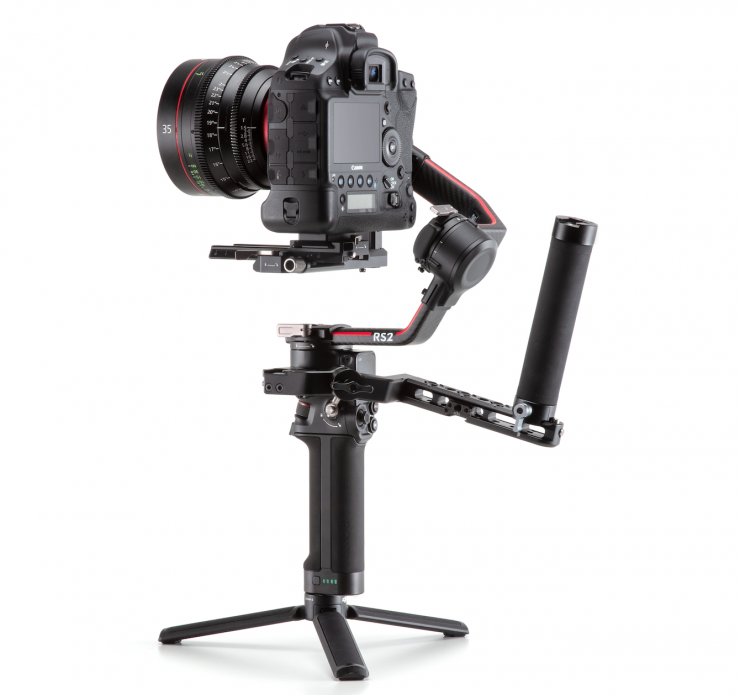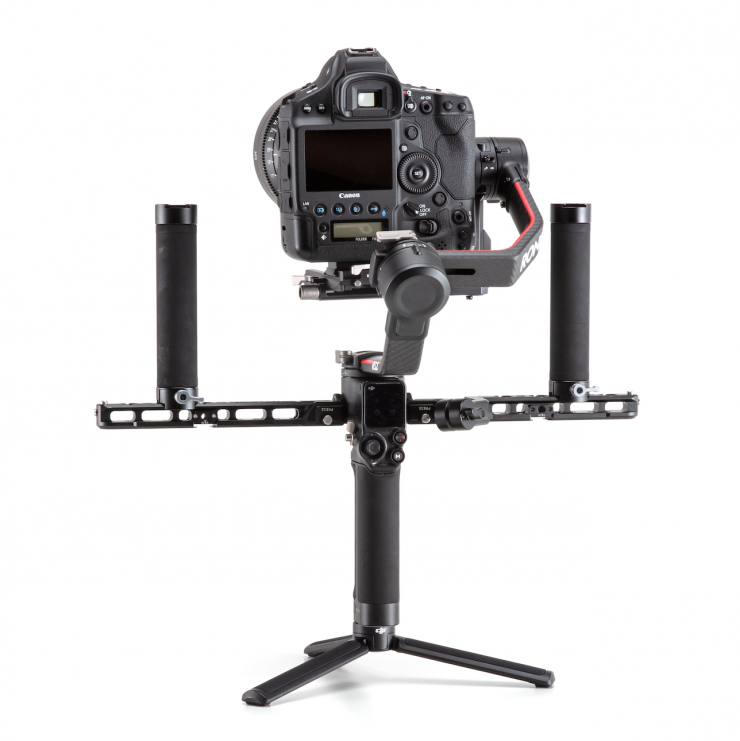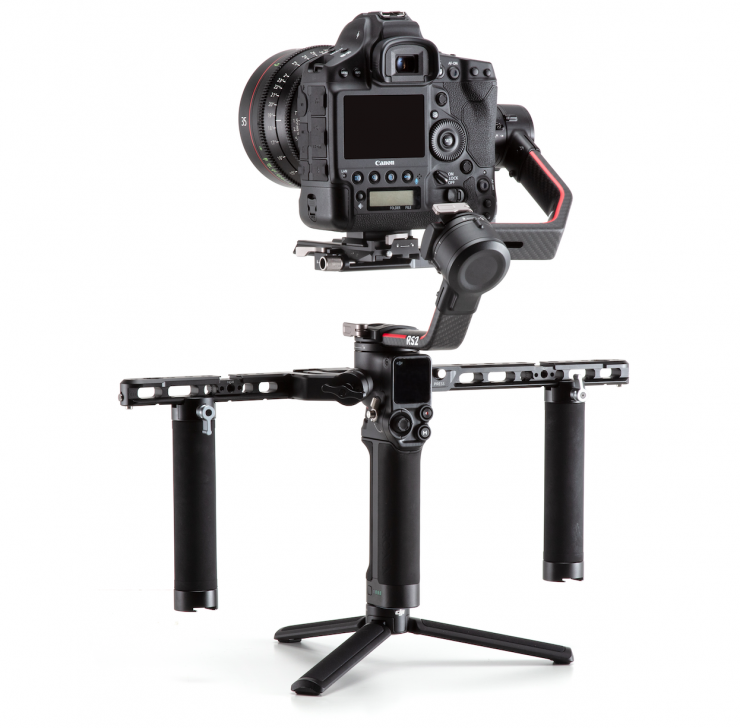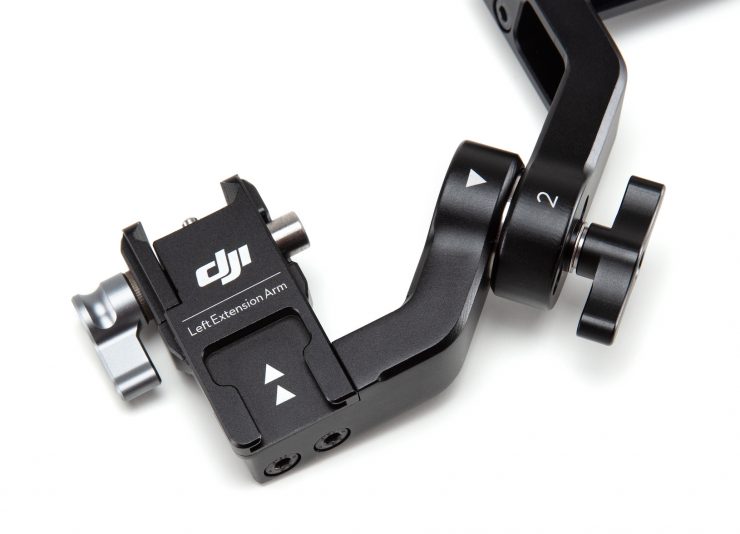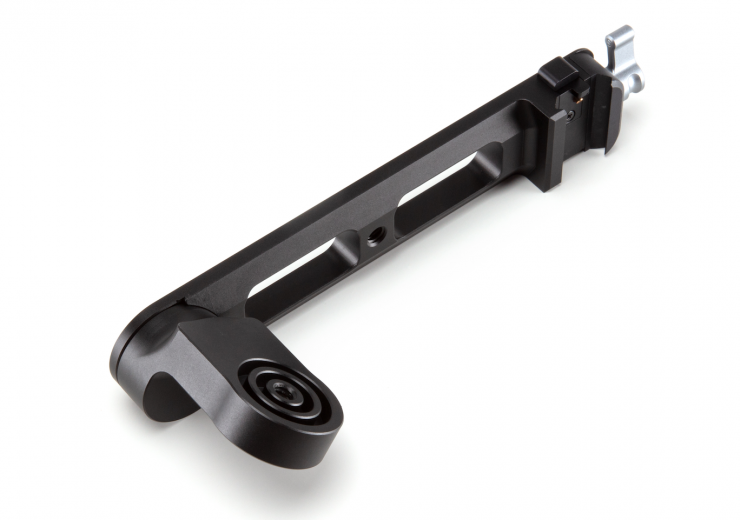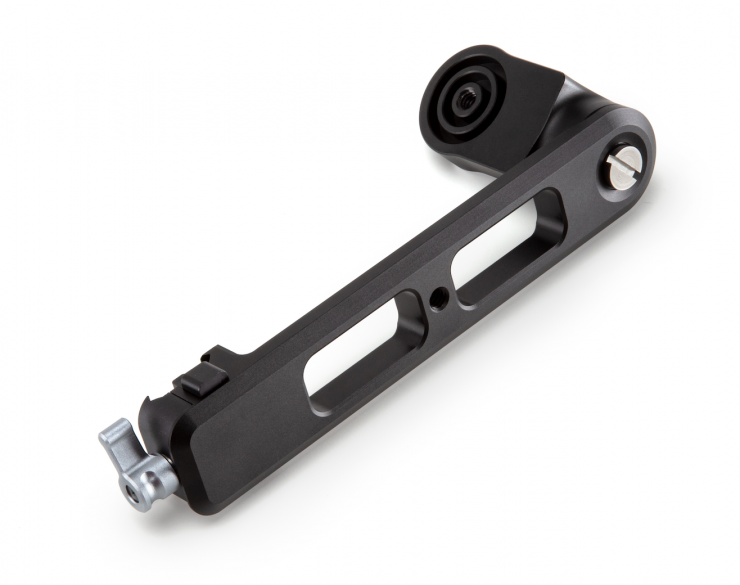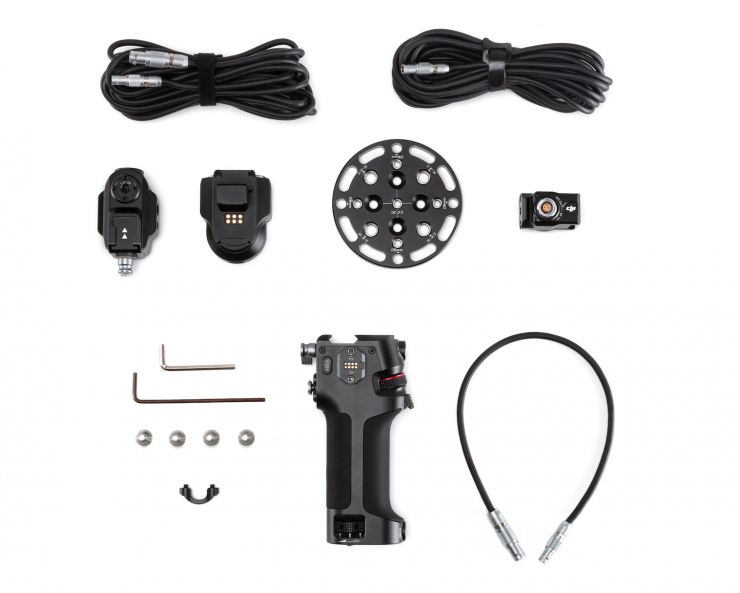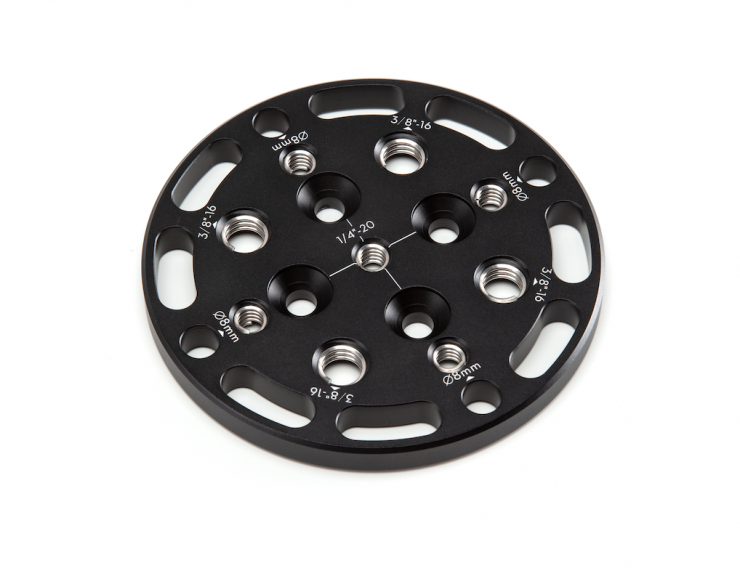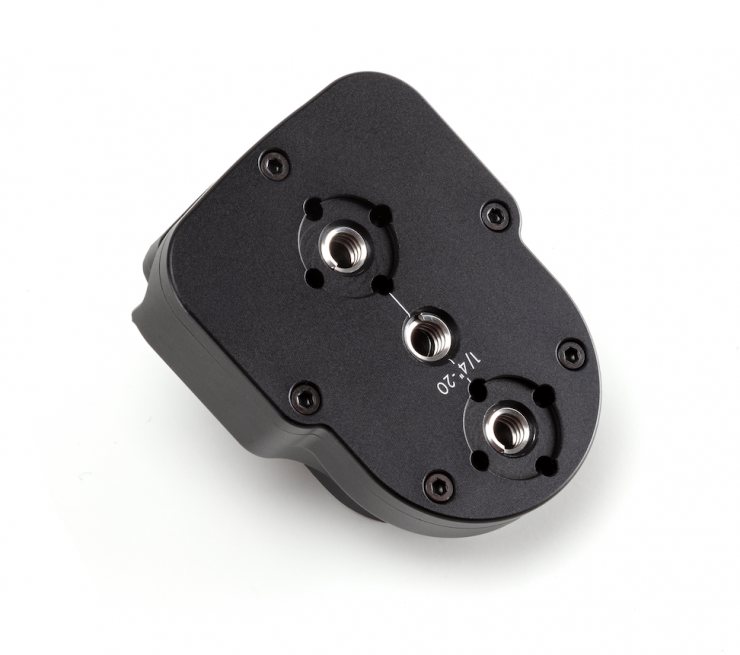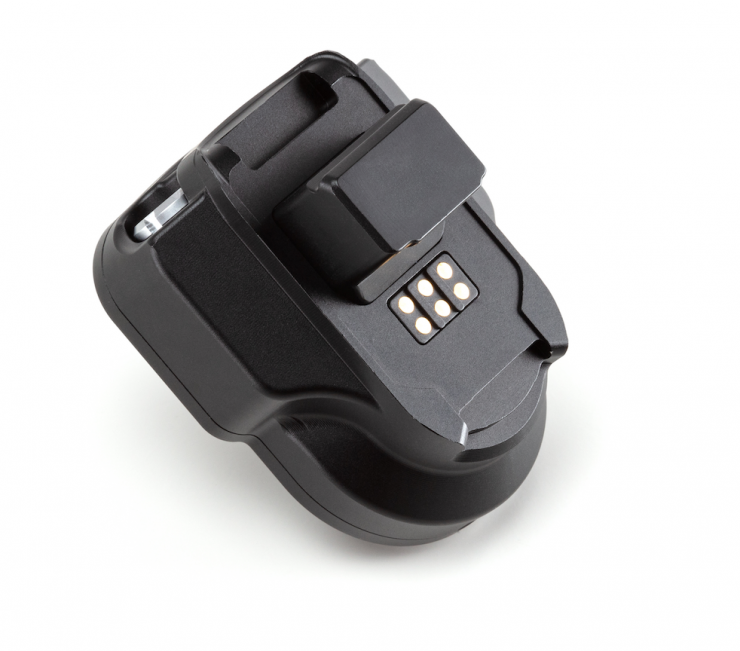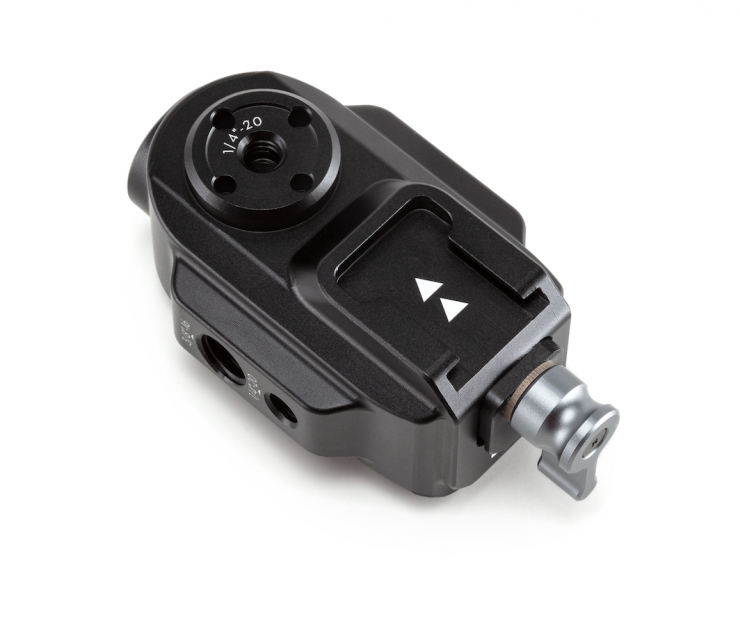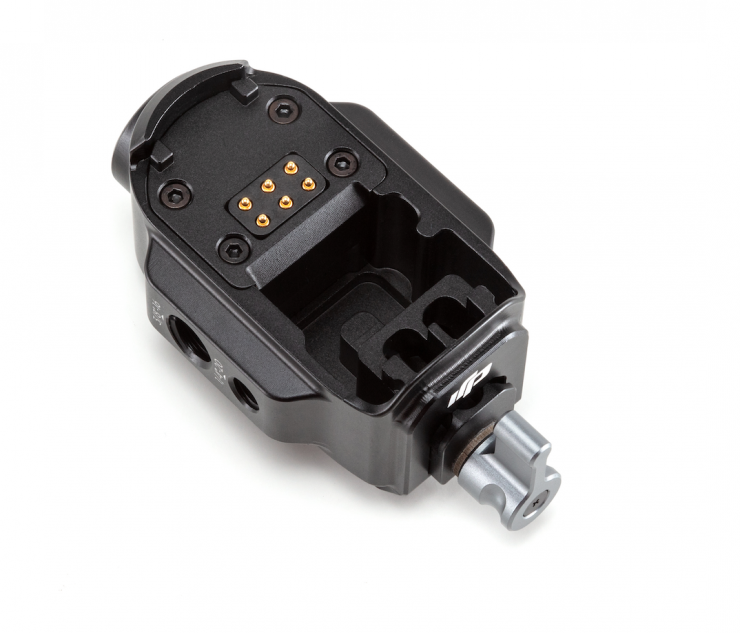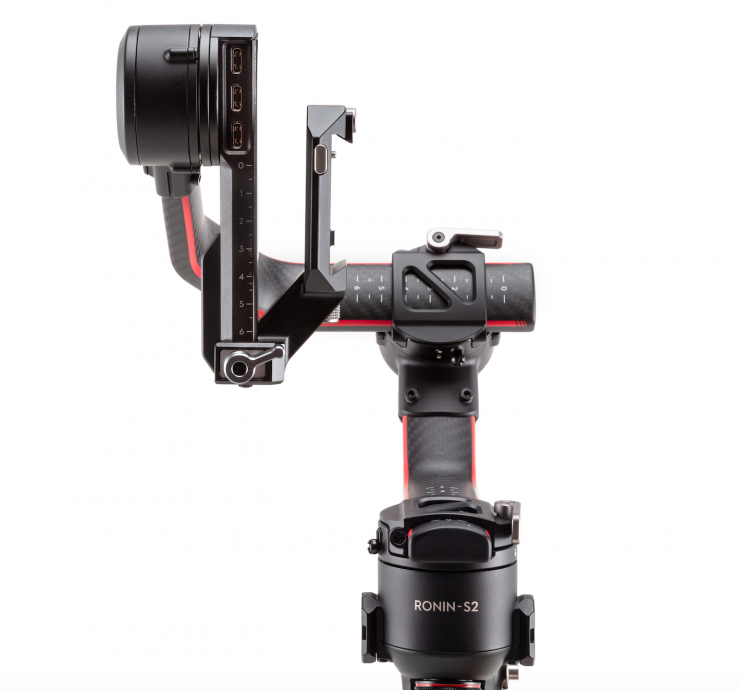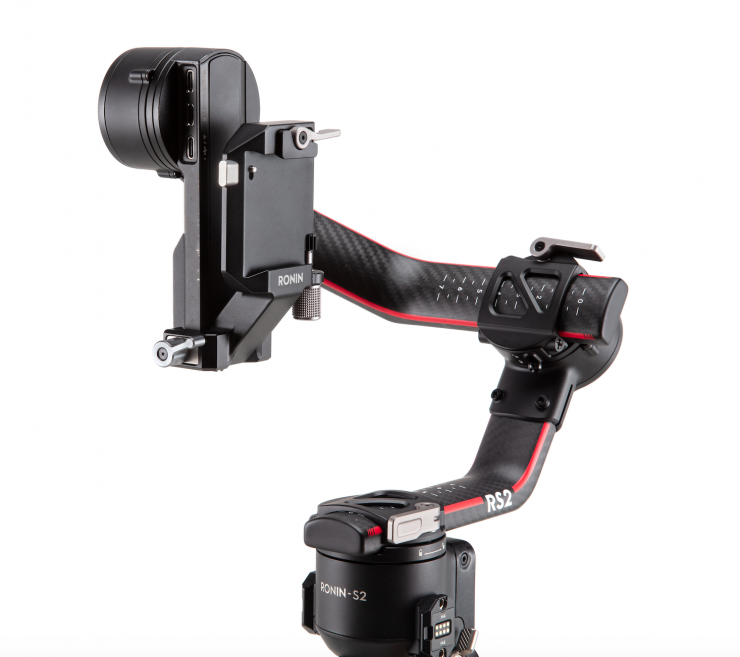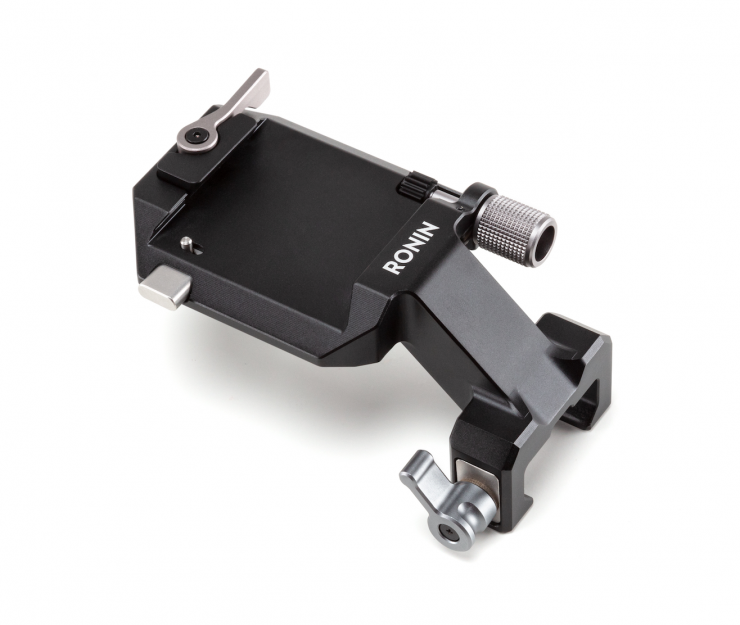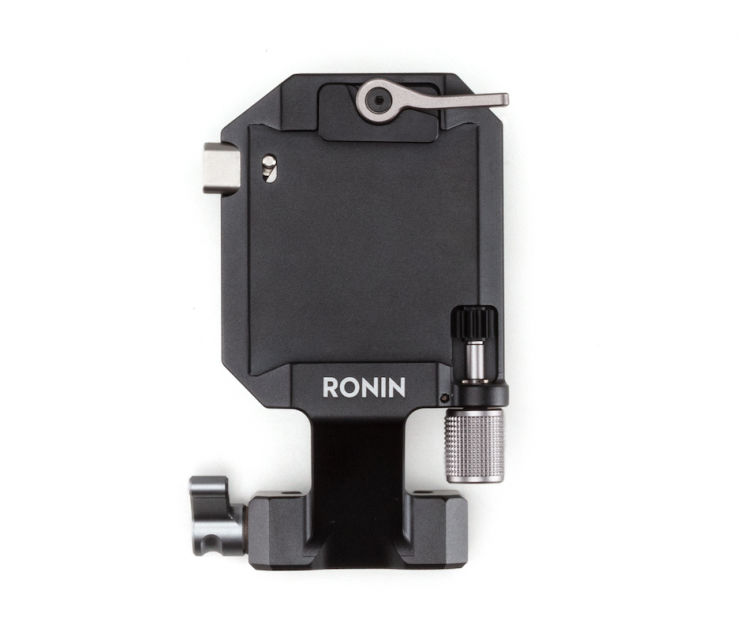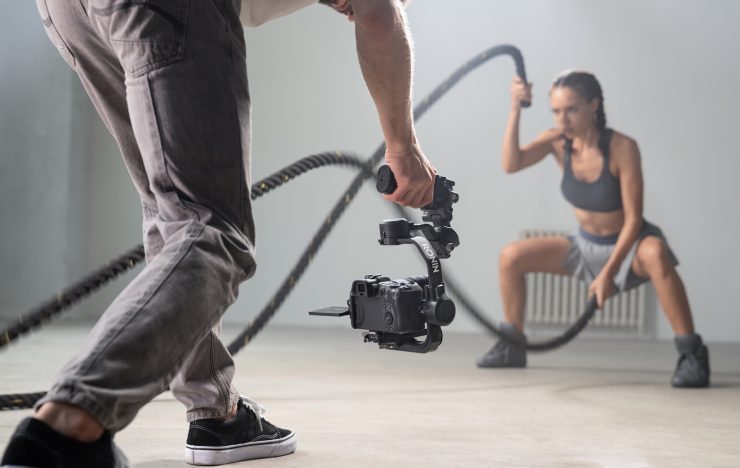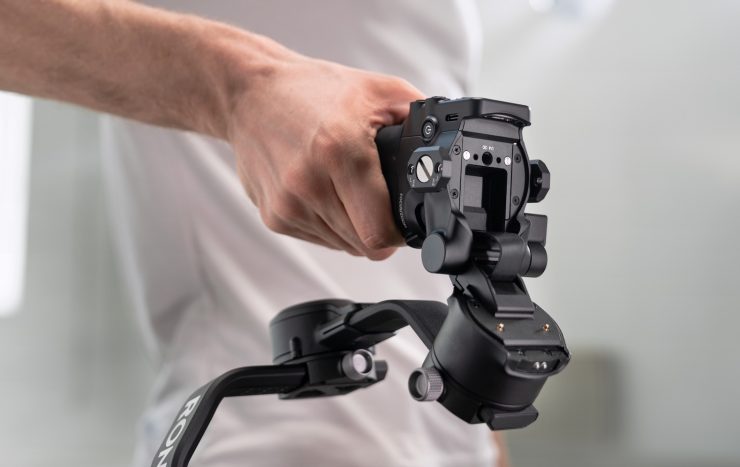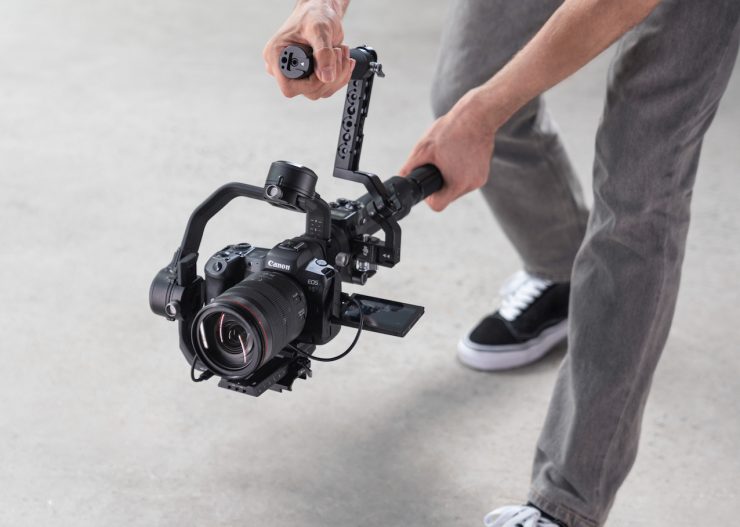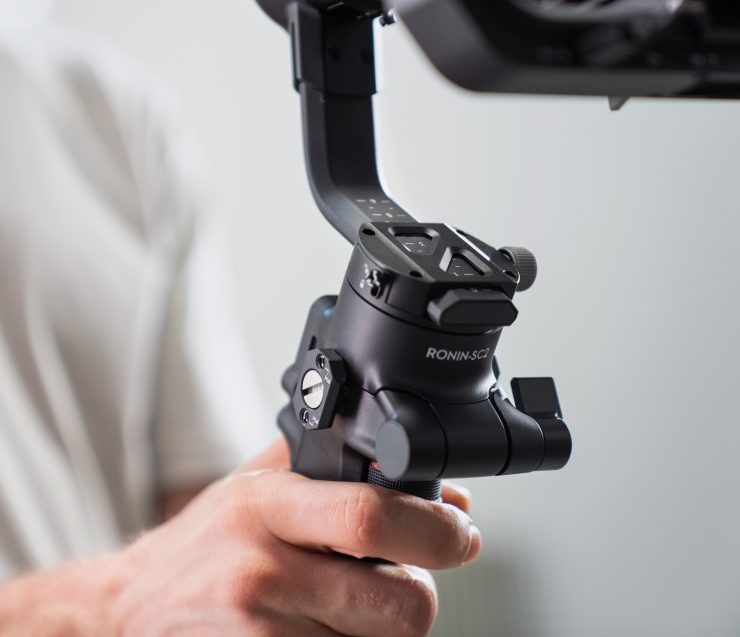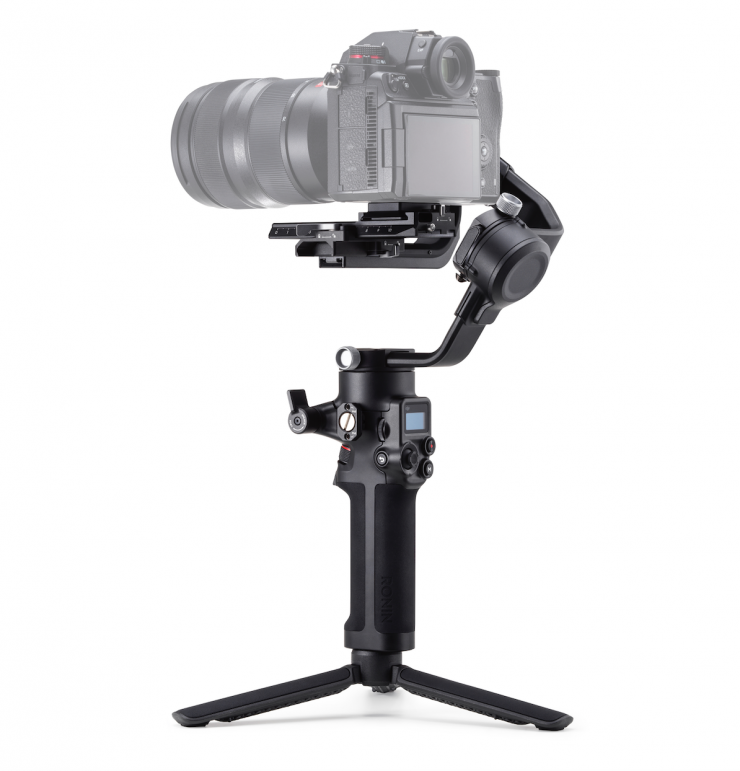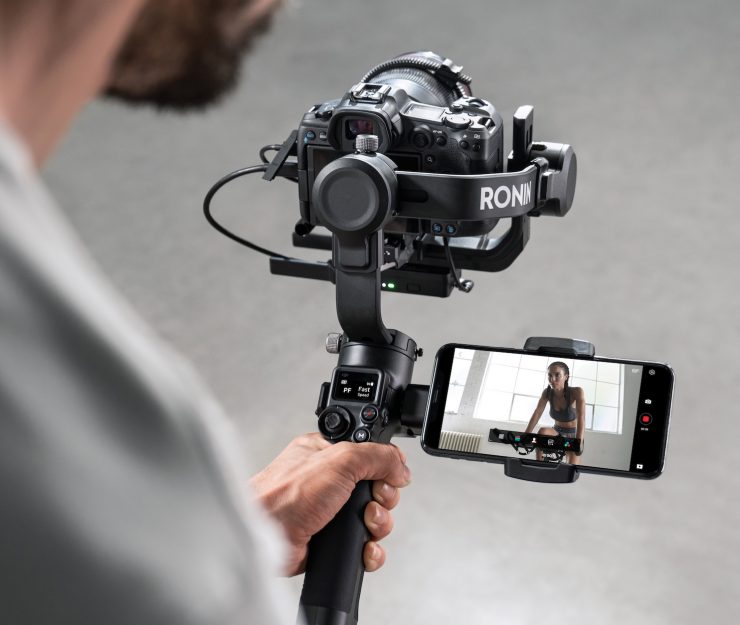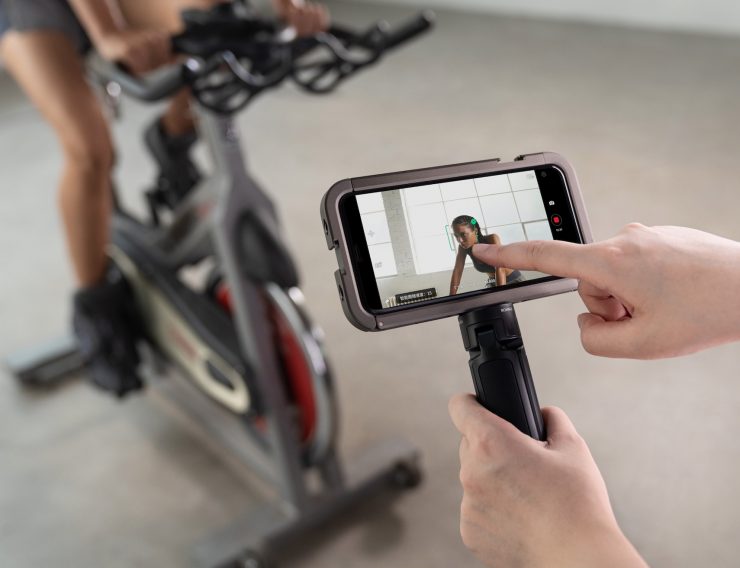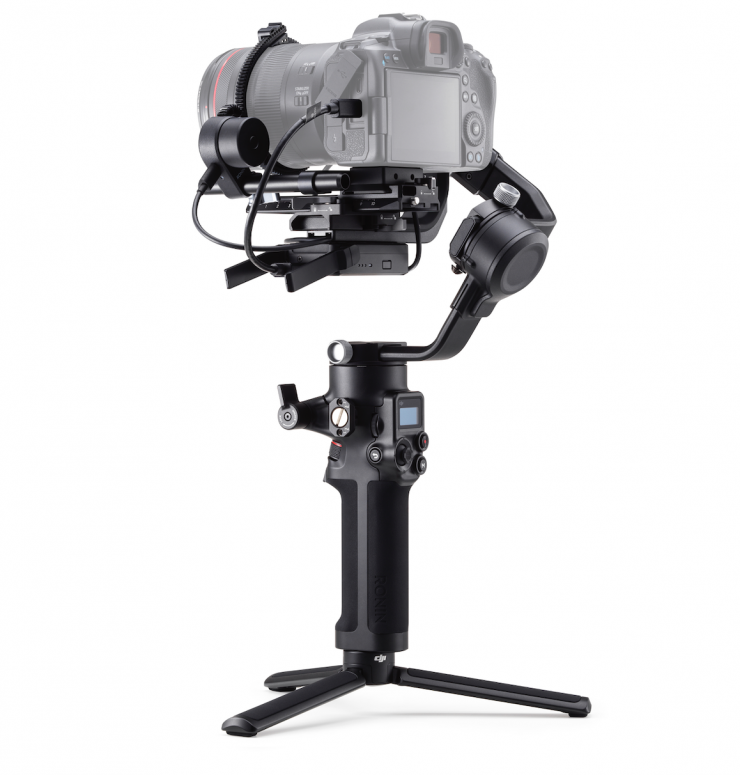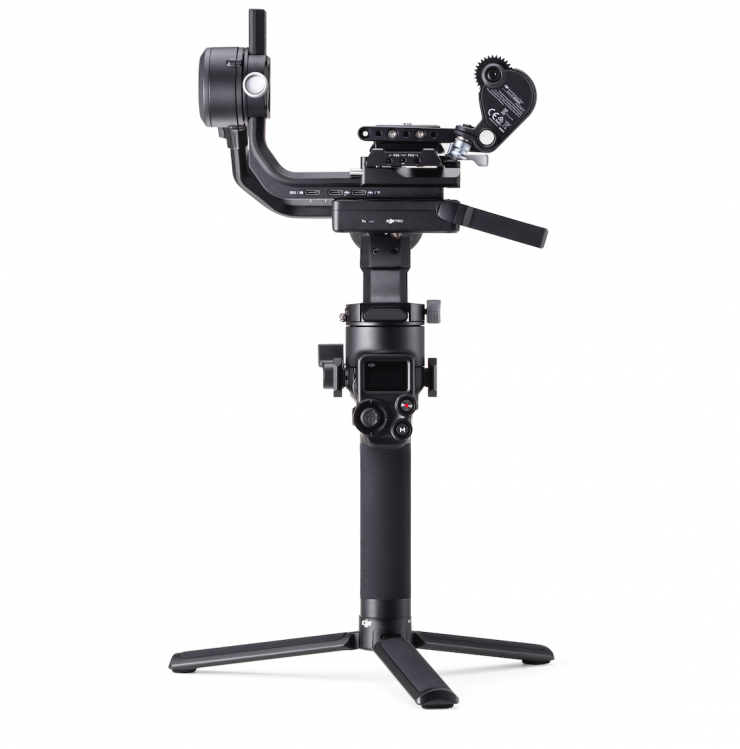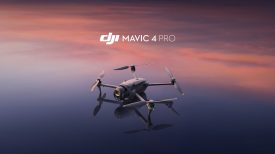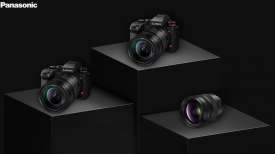
DJI has announced the Ronin RS2 and RSC 2 gimbals. These are follow-ups to the popular Ronin S that was announced in January 2018 and the Ronin SC that was announced in July 2019.
Both gimbals look to over nice improvements over their predecessors. The DJI RS 2 brings added strength and agility so shooters can use heavier camera setups. The DJI RSC 2 has been designed to be portable and nimble for those users who want to run smaller mirrorless and DSLR cameras.
DJI RS 2
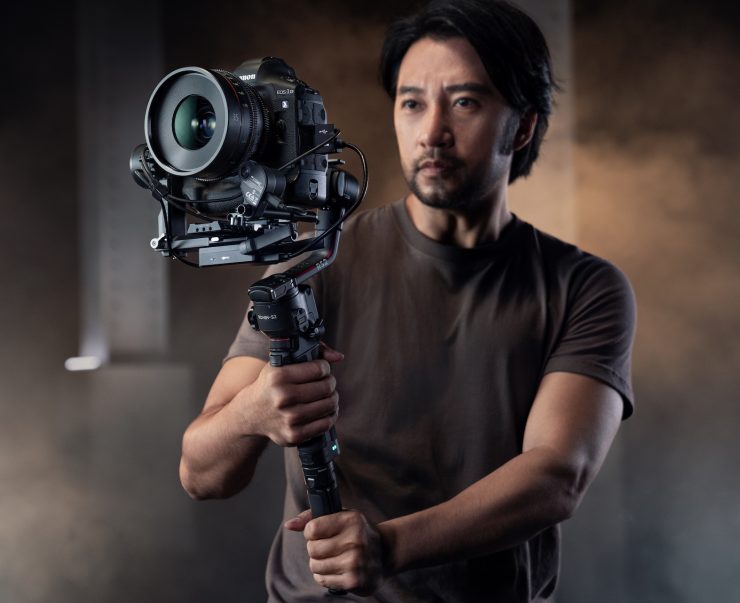
DJI took a lot of feedback from users of the Ronin RS when designing the RS 2. DJI has made the RS 2 a lot lighter by incorporating carbon fiber in vital structural components. The weight of the RS 2 is 1.3 kg (2.86 lbs), which makes it 560g lighter than the Ronin S (1.86 kg / 4.1 lb).
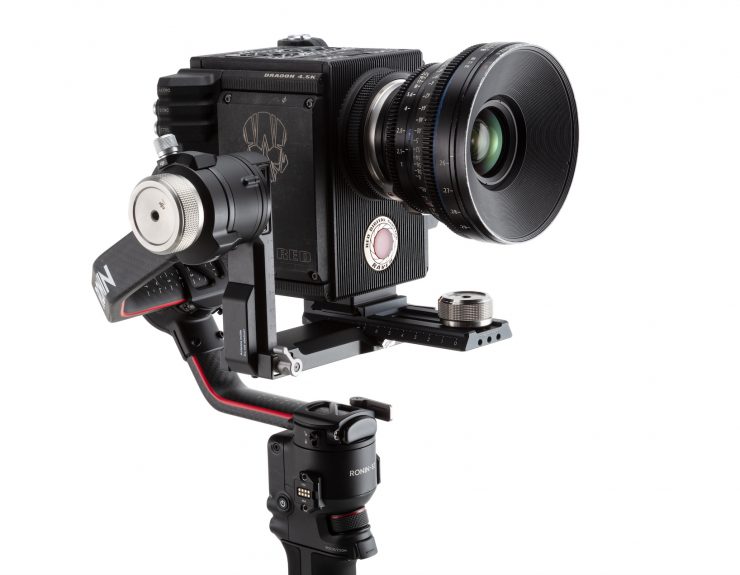
This utilization of carbon fiber has a two-fold effect. It not only makes the gimbal lighter, but it also increases the payload capacity. The RS 2 can now handle up to 4.5 kg (10 lbs) payloads, which is a 900g more than the Ronin S (3.6 kg / 7.94 lb).
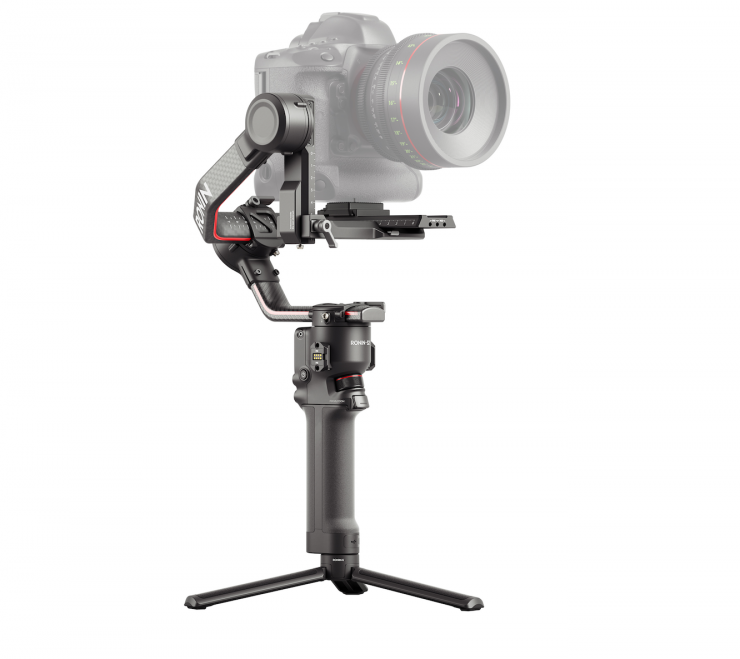

RS 2 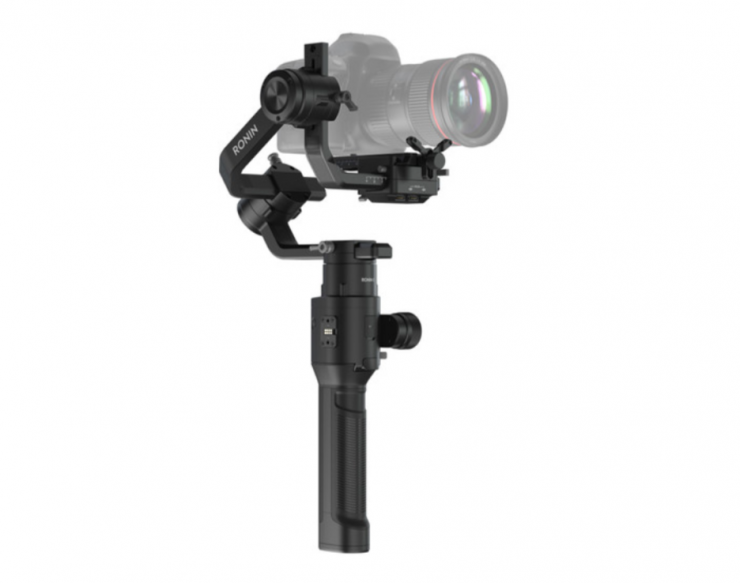
Ronin S
Above you can see how it looks when compared to the Ronin S. As you can see, the fundamental design hasn’t changed that much from the original.
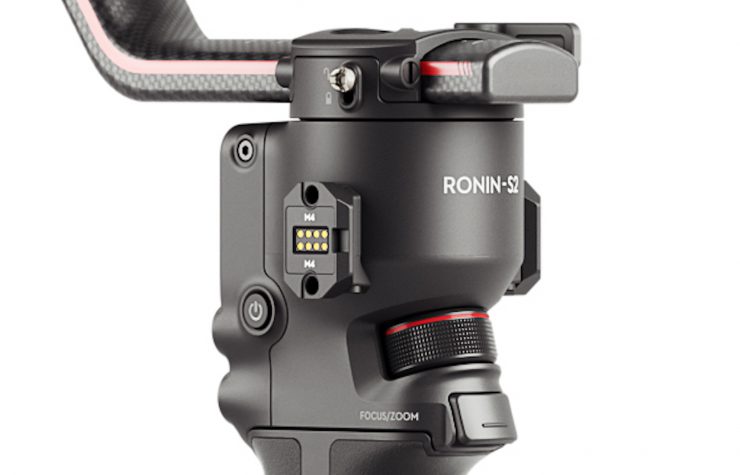
DJI wanted to make the RS 2 simple to set up, easy to operate, and customizable so that users could adapt it to whatever their requirements are. There are axis locks that enable easier transportation and balancing, as well as a dual-layer camera mounting plate that is compatible with both the Arca-Swiss and Manfrotto standard. There is also a fine-tune balancing knob that allows for more precise balancing of cameras.
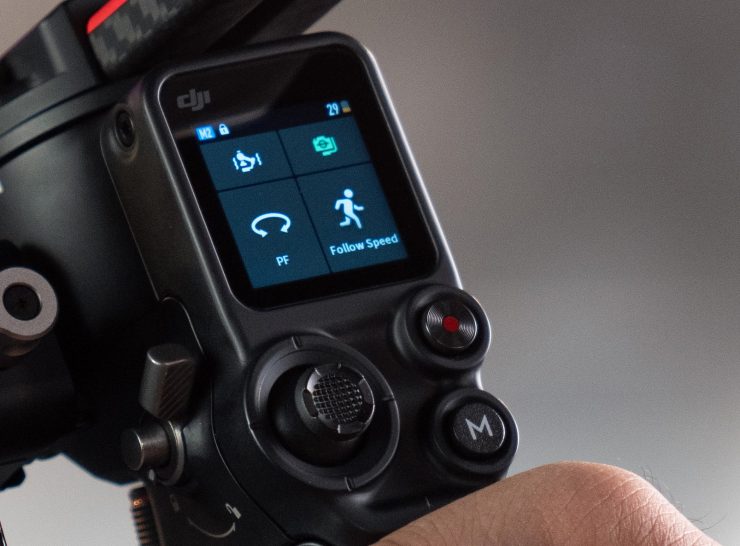
Finally, DJI has included an LCD screen. This is something competing gimbals have had for a long time. The built-in 1.4” color touchscreen display camera data, gimbal settings, or a live feed from the camera. The screen can also initiate key functions such as ActiveTrack and other intelligent shooting modes.
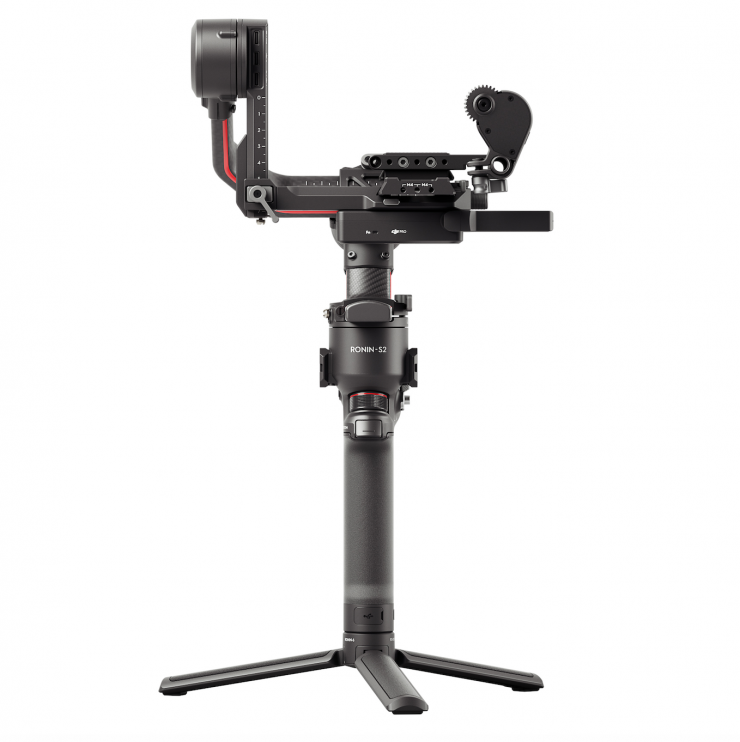
DJI says that a newly optimized Titan Stabilization Algorithm reduces the need for manual user input while compensating for user movement and optimizing the gimbal tilt and angle. There is also a new SuperSmooth mode that is claimed to provide further stability when using longer focal length lenses up to 100mm.
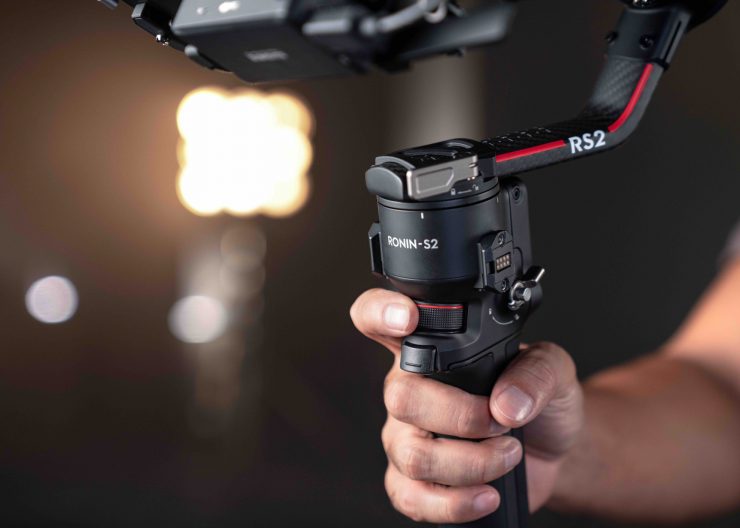
The built-in front dial above the trigger allows for focus control and complements a DJI Focus Wheel mounted on the RSA port to create two-channel focus and zoom.
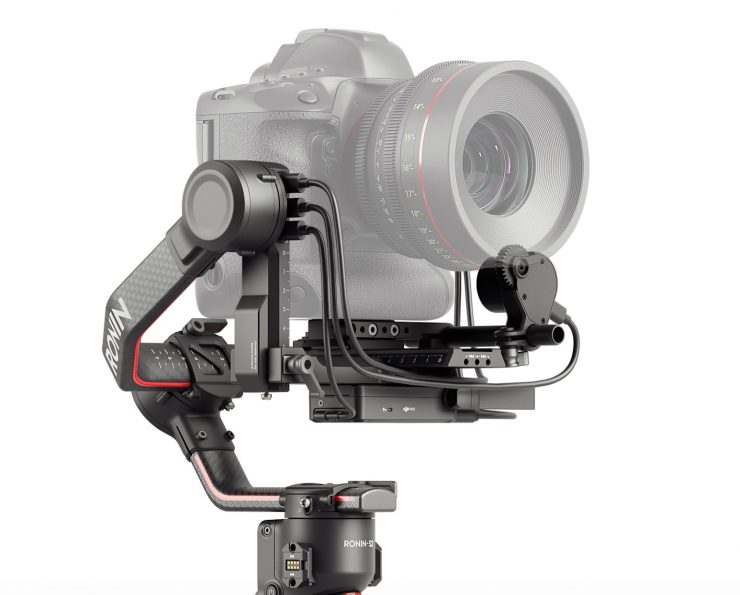
The RS 2 features three USB-C connectors so that three devices can be connected at once.
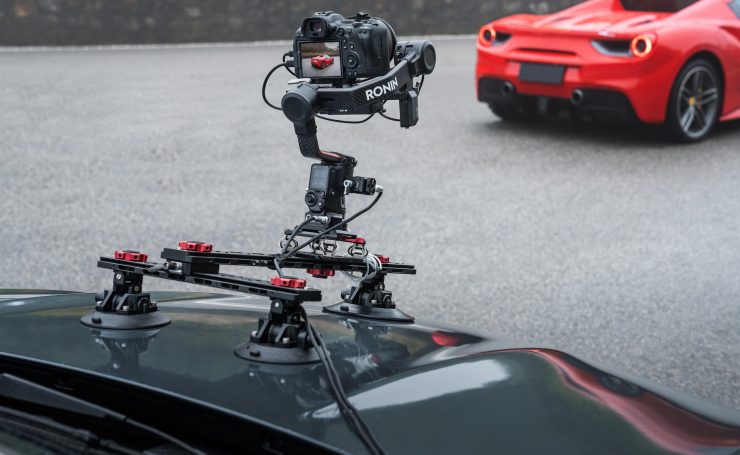
DJI has also thought about how the RS 2 can be attached and used with jibs, car attachments, and sliders. Two RSA ports double as NATO ports so that users can mount accessories and attachments such as grips and a remote controller.
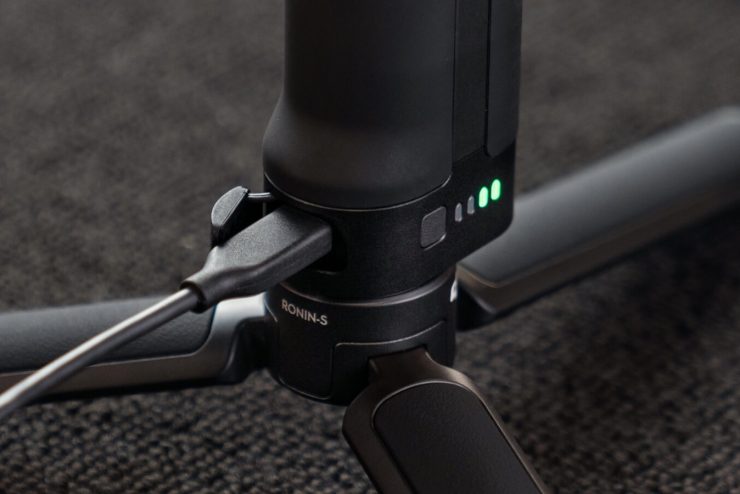
DJI claims that the RS 2 has up to 12 hours of battery life. A new quick-charge function that has been added that provides an extra two hours of battery life with just a 15-minute charge. This is a very handy feature to have on a gimbal.
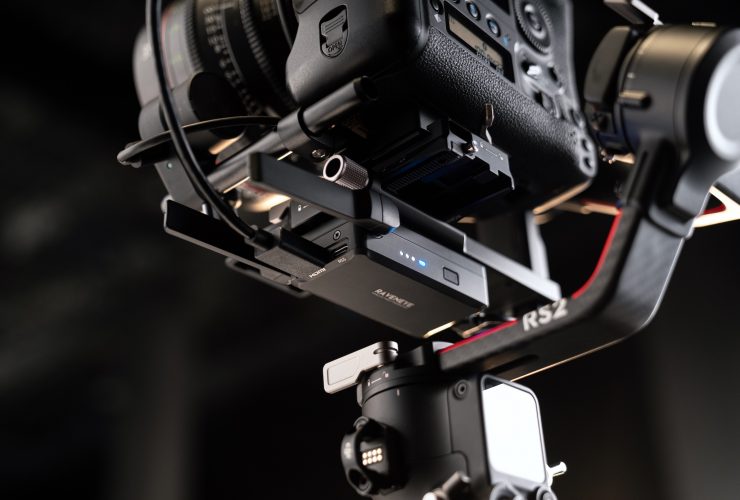
For remote operation, you can use ActiveTrack 3.0 when the new RavenEye Image Transmission System is connected. This is able to send a 1080p/30fps low-latency feed to a mobile device using the Ronin app from up to 200 meters (656 ft) away.
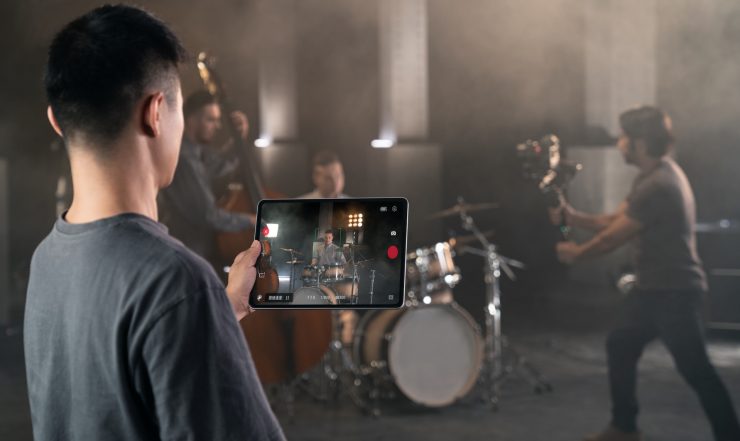
The Ronin app allows key features and functions to be controlled and adjusted over long distances with the Ronin app such as gimbal movement using the virtual joystick and Force Mobile.
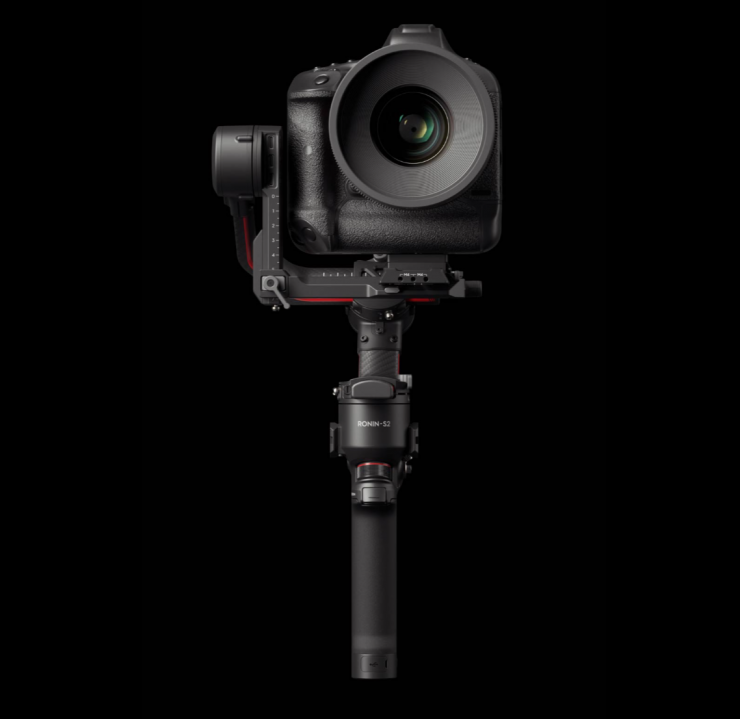
For solo operators using manual-focus lenses, the 3D Focus System uses TOF sensors mounted above the camera to provide autofocus. This enables a single shooter to capture footage using a manual lens, without relying on a second camera operator or focus puller.
The gimbal now features a small built-in display to allow for better control over the gimbal. Competitors of DJI have had this in their gimbals for the last few generations and gives users a visual way to change gimbal and camera settings without the need to use a mobile app.
The DJI RS 2 gets an expanded array of creative modes. These include:
- Time Tunnel: The system performs a 360-degree roll while capturing a hyperlapse, adding a level of creativity to footage.
- Flashlight: The system tilts the camera all the way forward so users can grip the base like a flashlight.
- One-Tap Portrait Mode: The gimbal quickly orients the camera into vertical shooting for professional-level social media content.
- Panorama: After configuring sensor and focal length, choose a start and stop point for panoramas up to gigapixel size.
- Roll 360: The gimbal enters into the Flashlight position and rolls the camera system 360 degrees.
- Timelapse: This classic feature shows subtle changes over durations of your choosing.
Accessories
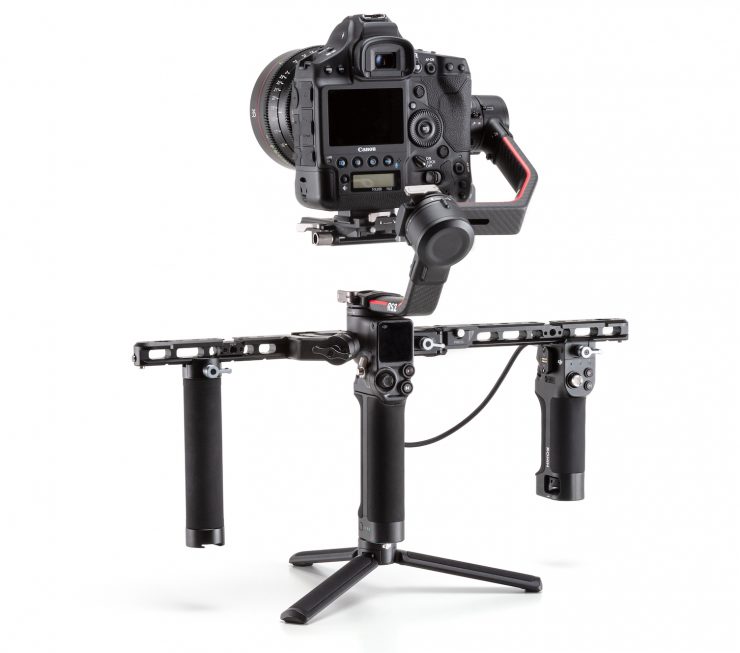

Twist Grip Dual handle & Control Handle 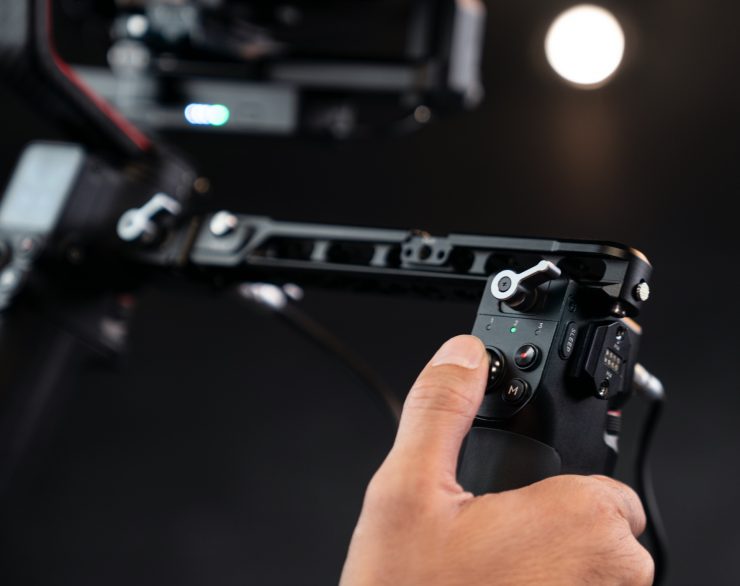
Control Handle
The DJI RS 2 can utilize accessories include a cheese plate, Focus Wheel, 3D Focus System, Twist Grip Dual Handle, RavenEye Image Transmission System, Tethered Control Handle, counterweight systems, and more.
Below you can see more images of the accessories:
CONTROL HANDLE
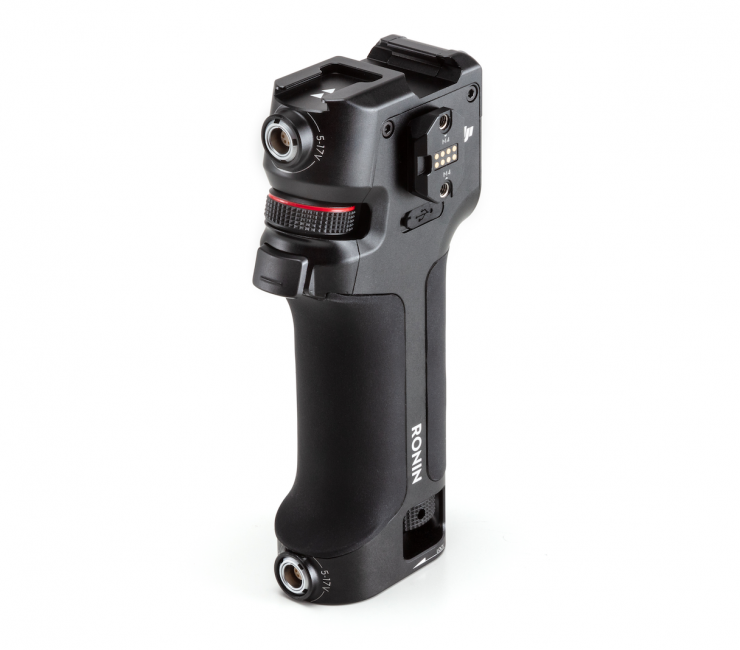
RAVEN EYE
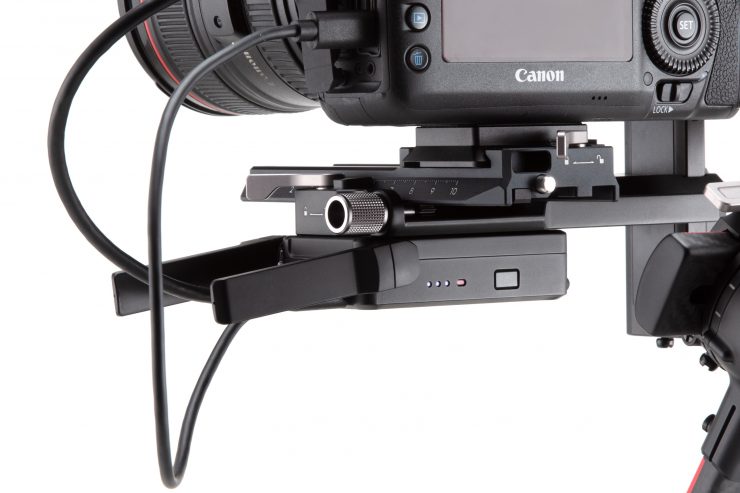
FOLLOW FOCUS MOTOR
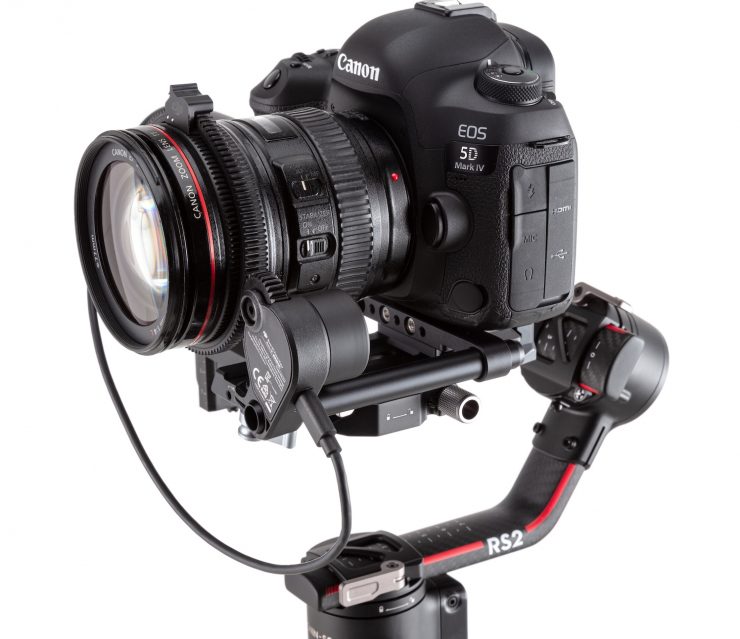
COUNTERWEIGHT SET
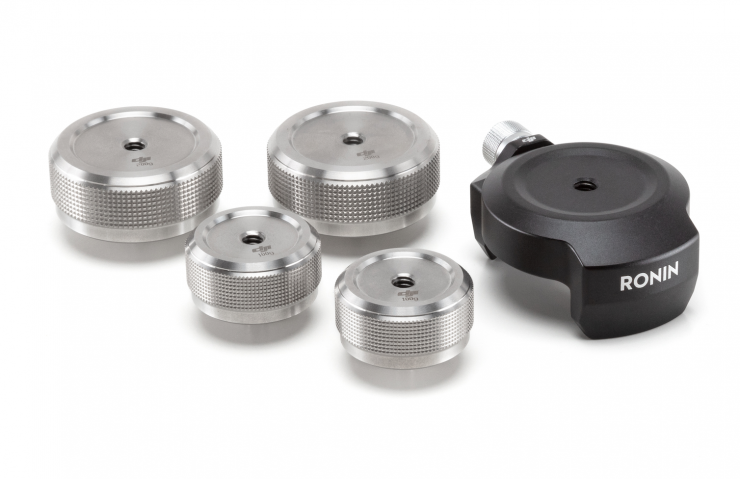
MOBILE PHONE HOLDER
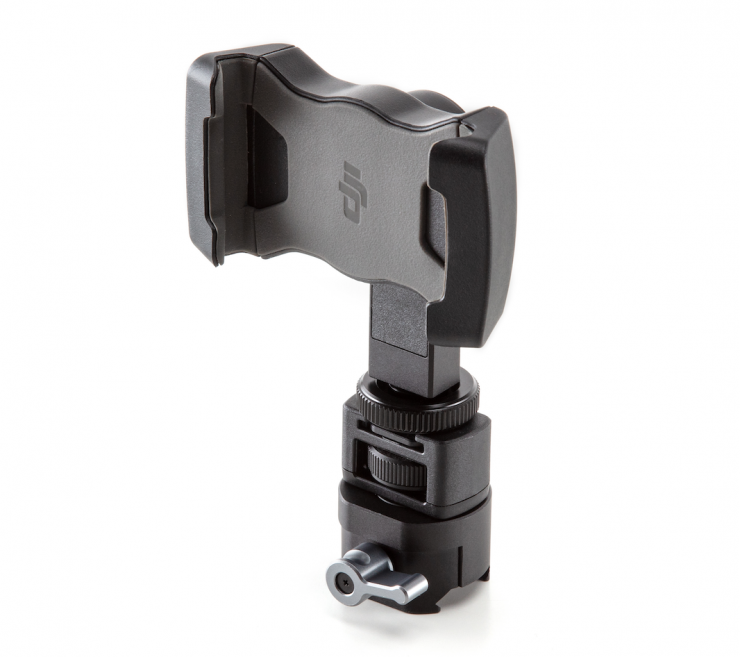
LOWER QUICK RELEASE PLATE
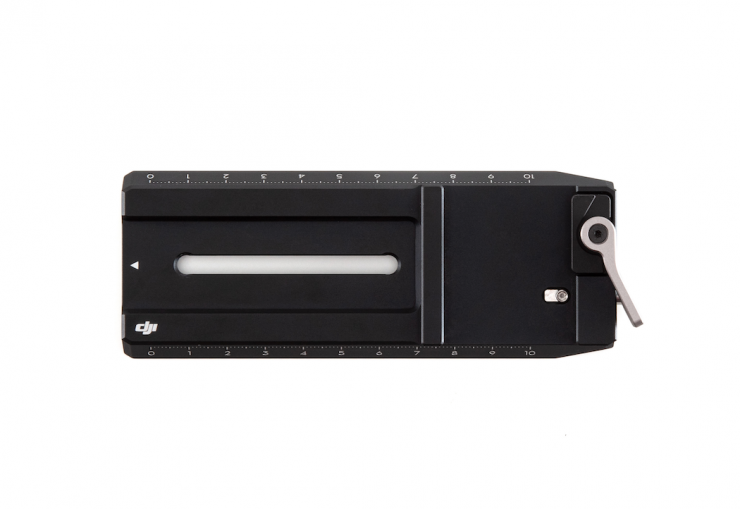
MULTI-FORM DUAL-HANDSET
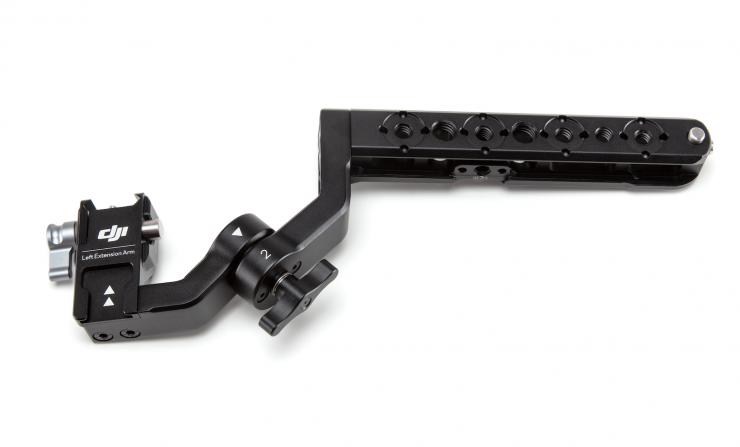
PORTABLE ADAPTER
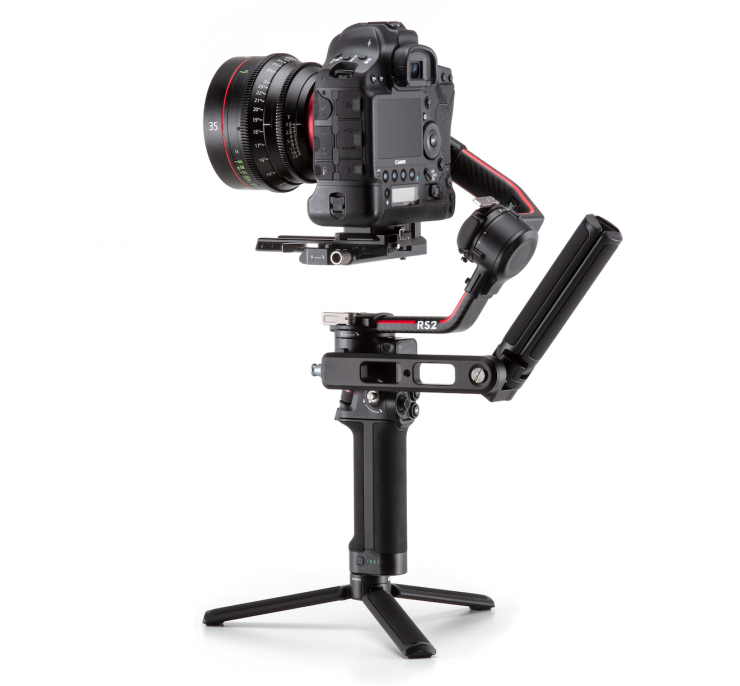
VEHICLE EXPANSION KIT
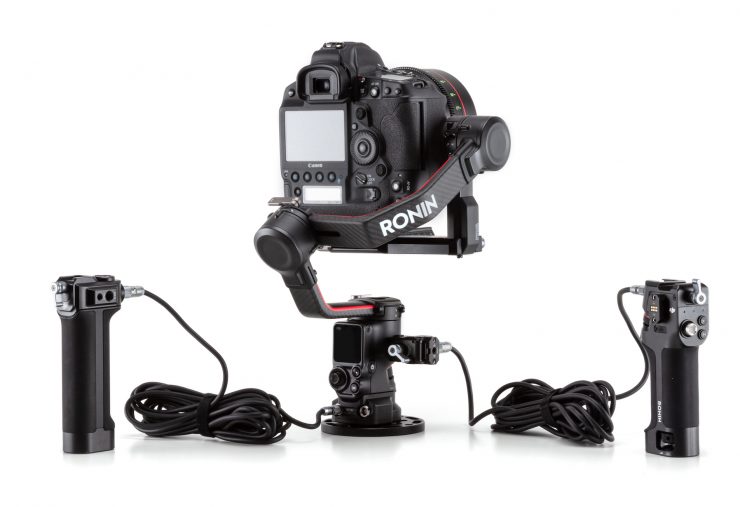
VERTICAL CAMERA FIXED COMPONENT
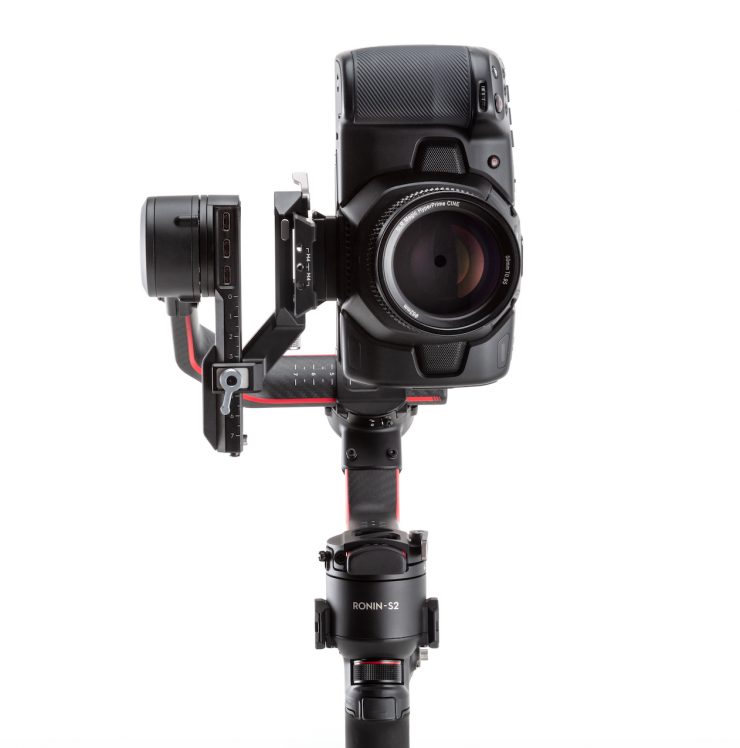
DJI RSC 2
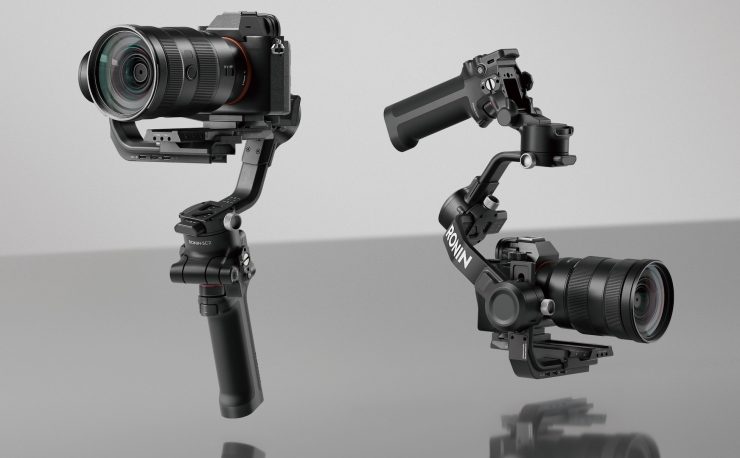
The RSC 2 features a completely new foldable design. Finally, DJI has made a foldable gimbal. For content creators using small mirrorless cameras who like to be able to pack as much as possible into a bag, having a gimbal that can fold down makes a big difference.
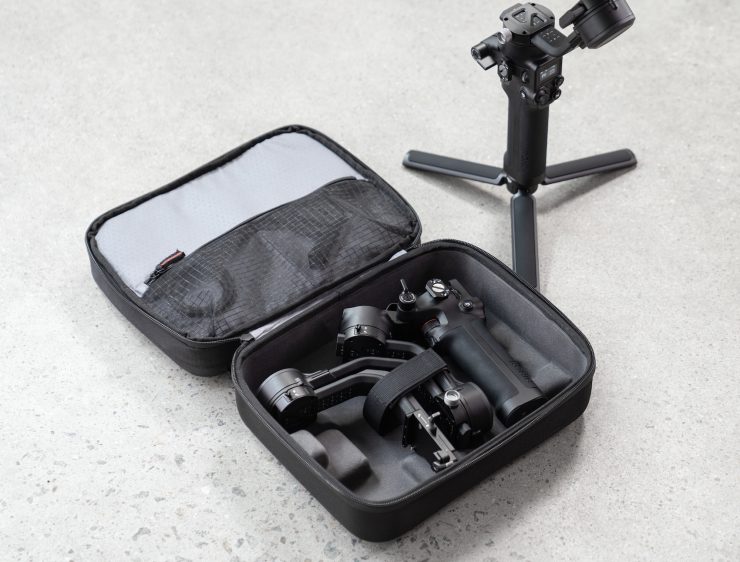
The RSC 2 has a folding footprint of 180 x 190 mm (7.08 x 7.48″) , the same size as a sheet of A5 paper.
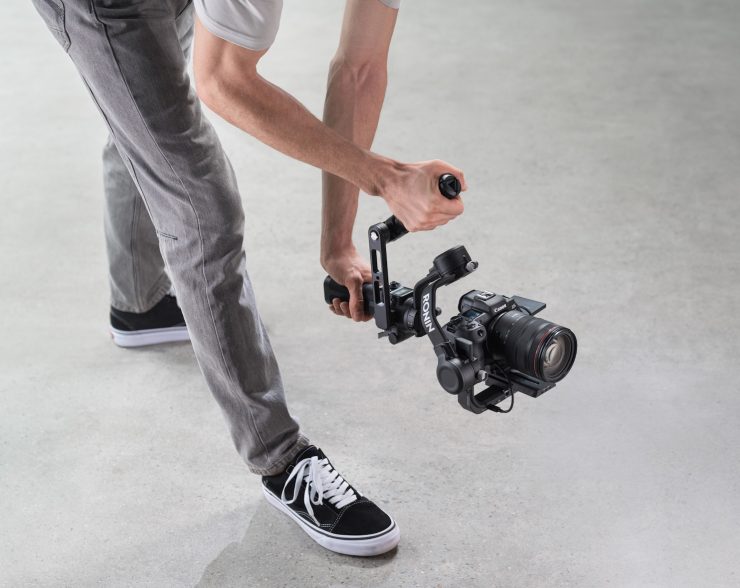
The other benefit of having a foldable design is that allows users creative ways to use the gimbal such as vertical filming without additional accessories. Because of this new design, DJI has been able to incorporate a new Briefcase mode, where the main gimbal arm can be loosened and slung forward to provide unique shooting angles.
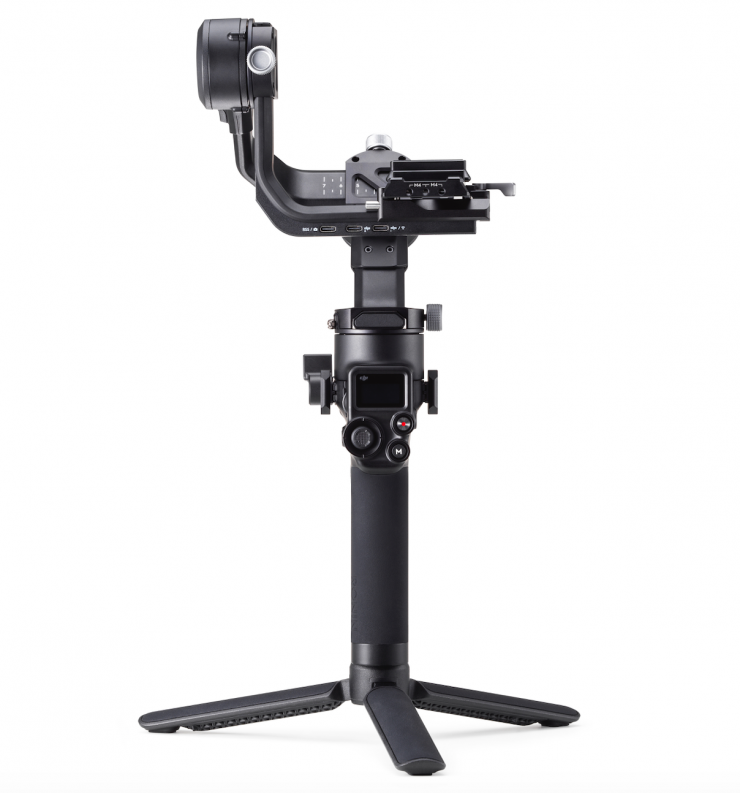
The RSC 2 is made out of a combination of steel and aluminum and it weighs in at 1.2 kg (2.65 lbs). This makes it slightly heavier than the original Ronion SC (1.1 kg / 2.43 lb).
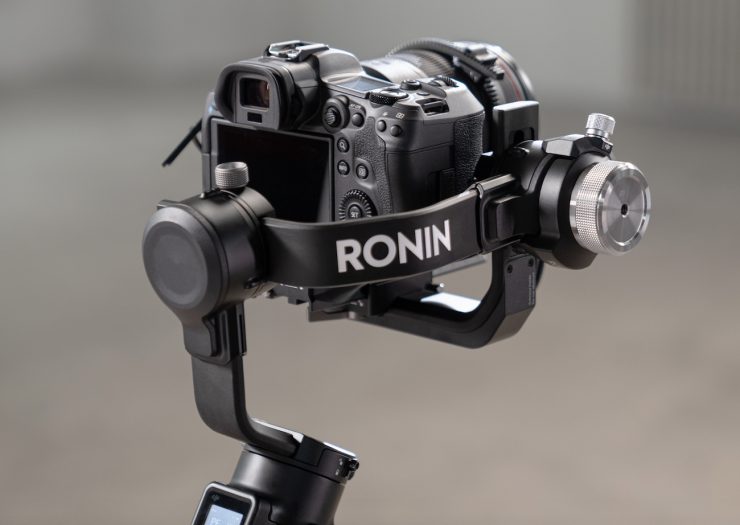
DJI RSC 2 features stronger motors to support a payload of up to 3 kg (6.6 lbs). This is an increase of 800g over the Ronin Sc (2.2 kg / 4.85 lb). This increased payload allows users to run heavier combinations such as the Panasonic S1H and a 24-70mm lens.
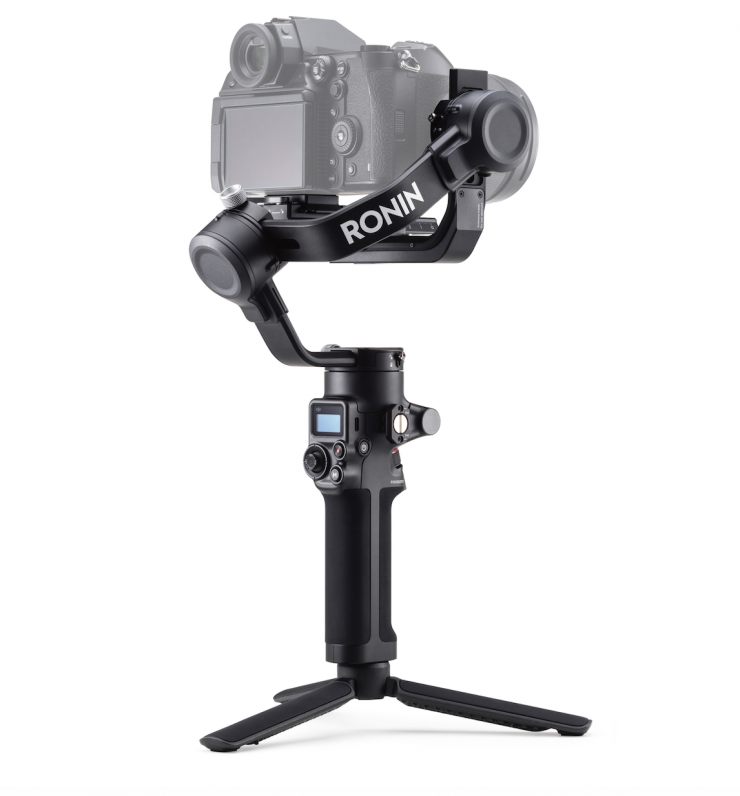

RSC 2 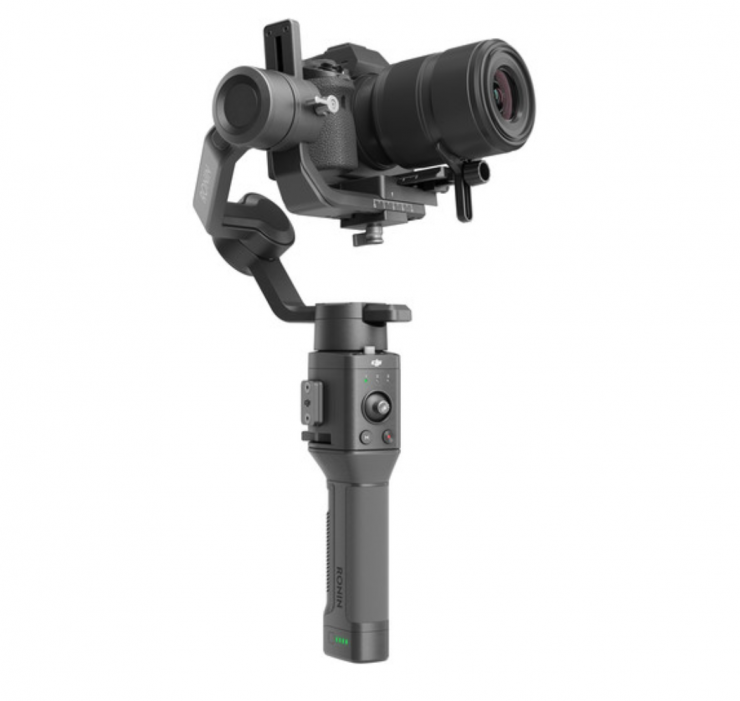
Ronin SC
Above you can see how different it looks from the original Ronin SC
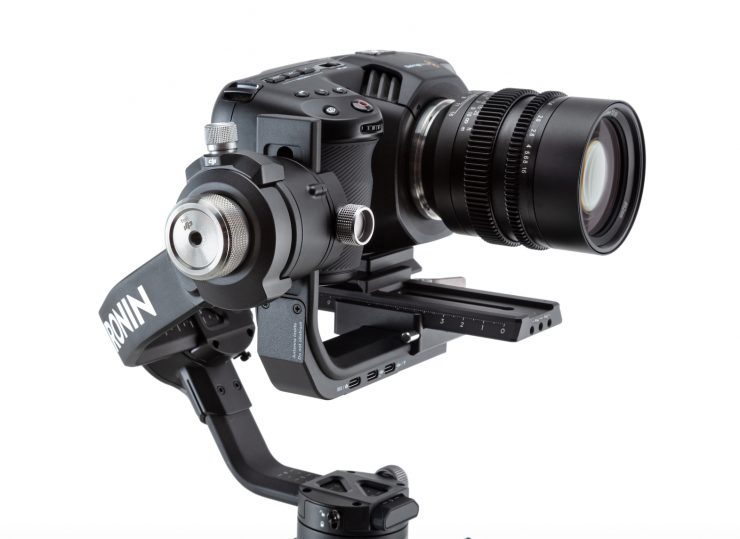
The RSC 2 uses the same Titan Stabilization Algorithm that is in the RS 2. Axis locks enable easier transportation and balancing, while a dual-layer camera mounting plate is compatible with both the Arca-Swiss and Manfrotto standard.
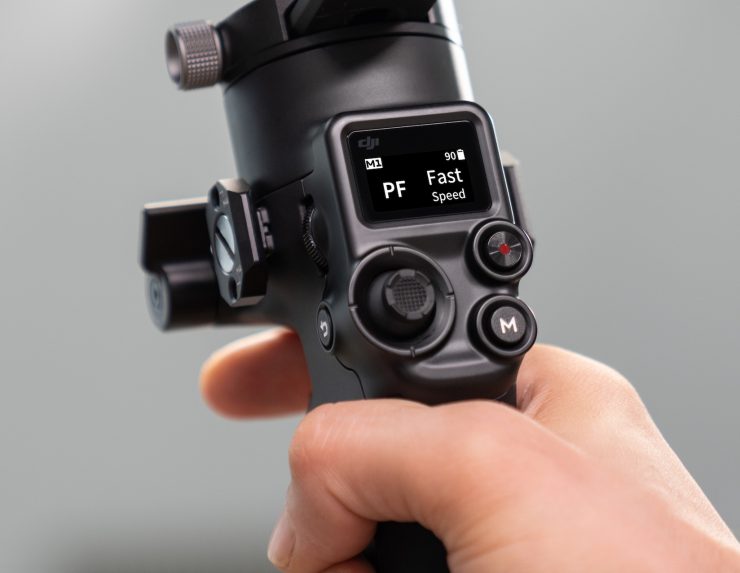
Just like the RS2, the RSC 2 gets a 1” built-in OLED screen displays camera data with the ability to adjust settings directly. The gimbal now features a small built-in display to allow for better control over the gimbal. Competitors of DJI have had this in their gimbals for the last few generations and gives users a visual way to change gimbal and camera settings without the need to use a mobile app.

The built-in battery offers a claimed 12 hours of battery life and just like the RS 2, there is a new quick-charge function directly to the battery handle has been added for urgent situations.
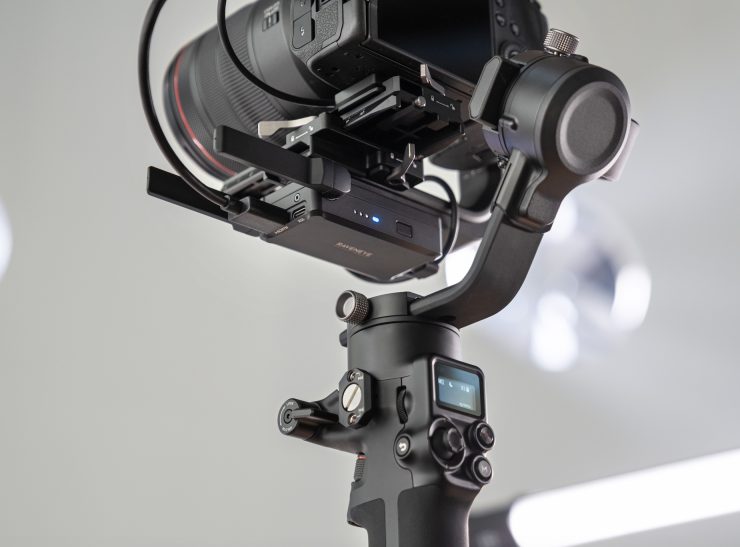
For remote operation, you can use ActiveTrack 3.0 when the new RavenEye Image Transmission System is connected. This is able to send a 1080p/30fps low-latency feed to a mobile device using the Ronin app from up to 200 meters (656 ft) away.

The Ronin app allows key features and functions to be controlled and adjusted over long distances with the Ronin app such as gimbal movement using the virtual joystick and Force Mobile.
For solo operators using manual-focus lenses, the 3D Focus System uses TOF sensors mounted above the camera to provide autofocus. This enables a single shooter to capture footage using a manual lens, without relying on a second camera operator or focus puller.
The DJI RSC 2 gets an expanded array of creative modes. These include:
- Time Tunnel*: The system performs a 360-degree roll while capturing a hyperlapse, adding a level of creativity to footage.
- Flashlight: The system tilts the camera all the way forward so users can grip the base like a flashlight.
- One-Tap Portrait Mode: The gimbal quickly orients the camera into vertical shooting for professional-level social media content.
- Panorama: After configuring sensor and focal length, choose a start and stop point for panoramas up to gigapixel size.
- Roll 360: The gimbal enters into the Flashlight position and rolls the camera system 360 degrees.
- Timelapse: This classic feature shows subtle changes over durations of your choosing.
*This won’t be available at launch and will be available in the future via a firmware update.

A lot of the same accessories that work with the RS 2 will work with the RSC 2.
Price & Availability
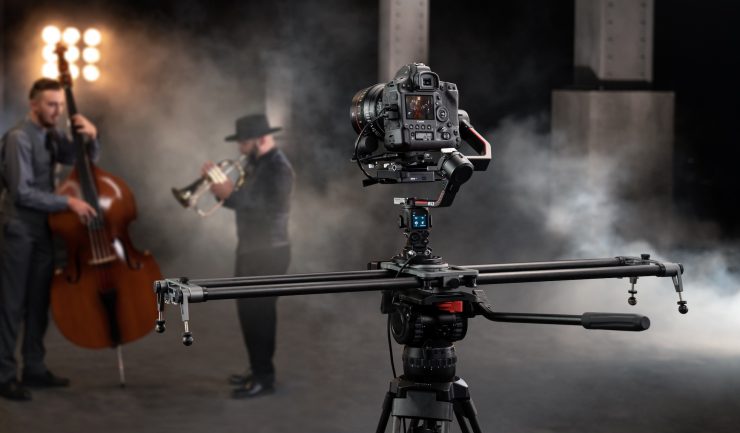
DJI RS 2 and DJI RS 2 are available for purchase today from authorized retailers and on www.store.dji.com. Each product offers purchase options for a standalone gimbal and a combination pack that includes additional accessories. The standalone DJI RS 2 is available for the retail price of $849 USD, and the standalone DJI RSC 2 is available at the retail price of $499 USD. The Pro Combo includes additional accessories such as a phone holder, Focus Motor, RavenEye Image Transmitter, dedicated carrying case, and more. The DJI RS 2 Pro Combo is priced at $999 USD, and the DJI RSC 2 Pro Combo is priced at $739 USD.
DJI Care Refresh
DJI Care Refresh is now available for both DJI RSC 2 and RS 2. For an additional $ USD, DJI Care Refresh offers comprehensive coverage as well as up to two replacement units within one year. Receive your replacement even sooner with DJI Care Refresh Express. DJI Care Refresh also includes VIP after-sales support and free two-way shipping. For a full list of details, please visit https://www.dji.com/service/djicare-refresh.
Thoughts
Both the RS 2 and the RSC 2 look like good upgrades over the previous models. We have gotten to a stage, much like we did with LED lights, where we are not really seeing any major significant improvements when it comes to actual performance. What we are seeing with gimbals is that companies making them are now thinking more about how people use them and how they can be designed to be more versatile.
Where I think DJI has an advantage over other competing companies is that they seem to have a much broader array of accessories. These accessories are also well thought out and integrated into the whole ecosystem.
I think both of these new offerings are likely to sell well, just like their predecessors. However, they will still face stiff competition from other gimbals that are already on the market.
What do you think of these new DJI gimbals? Let us know in the comments section below.

